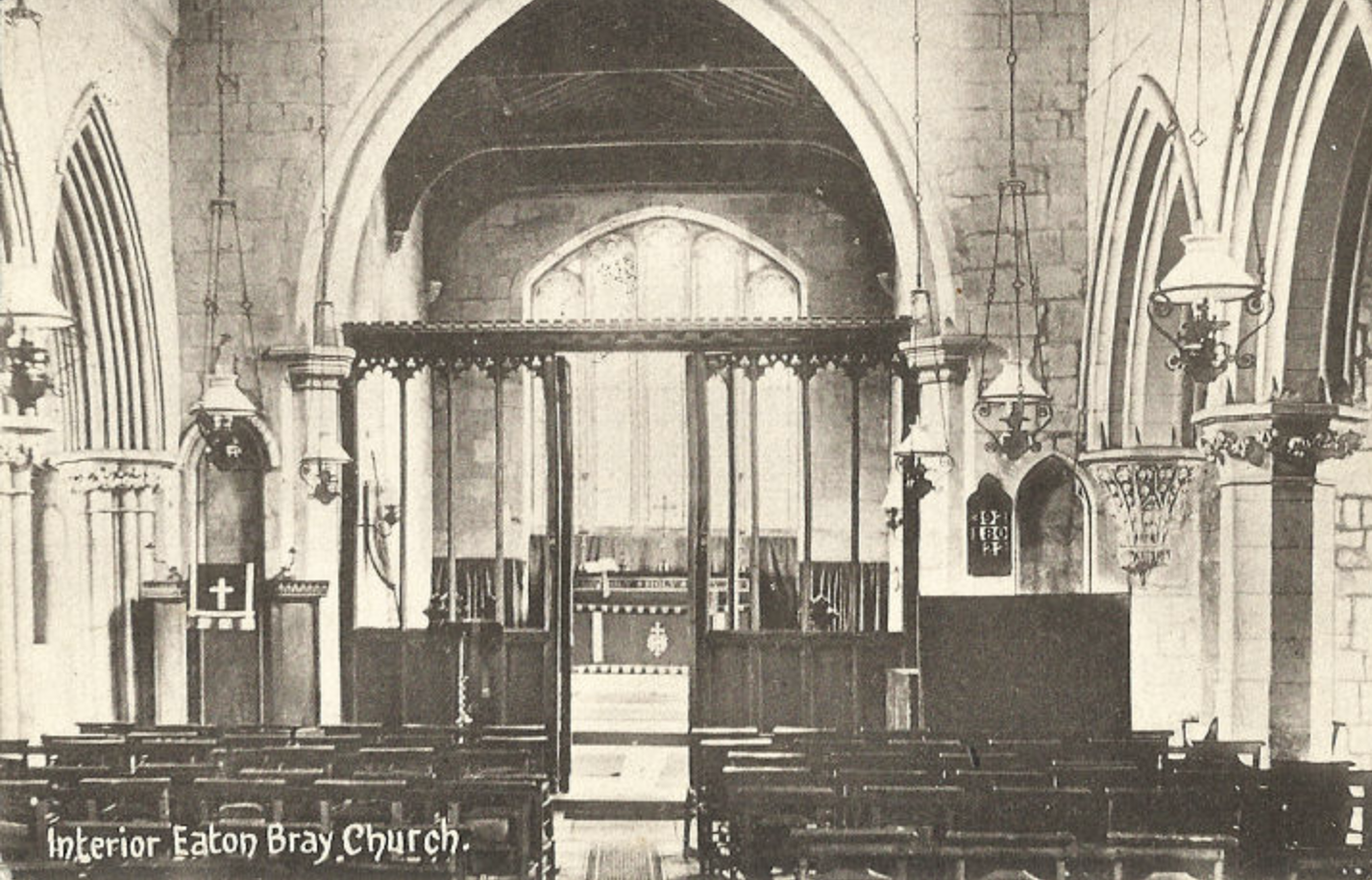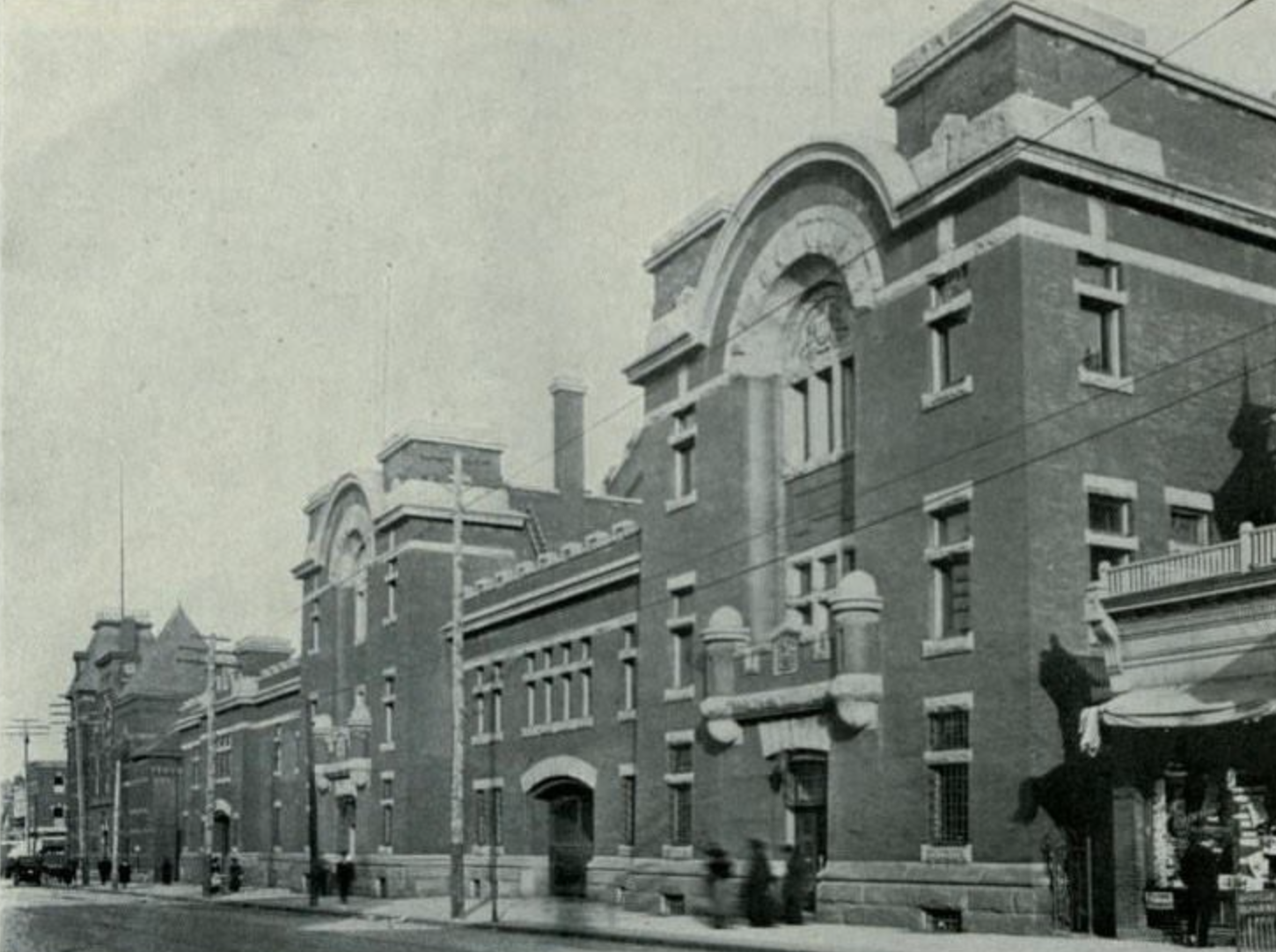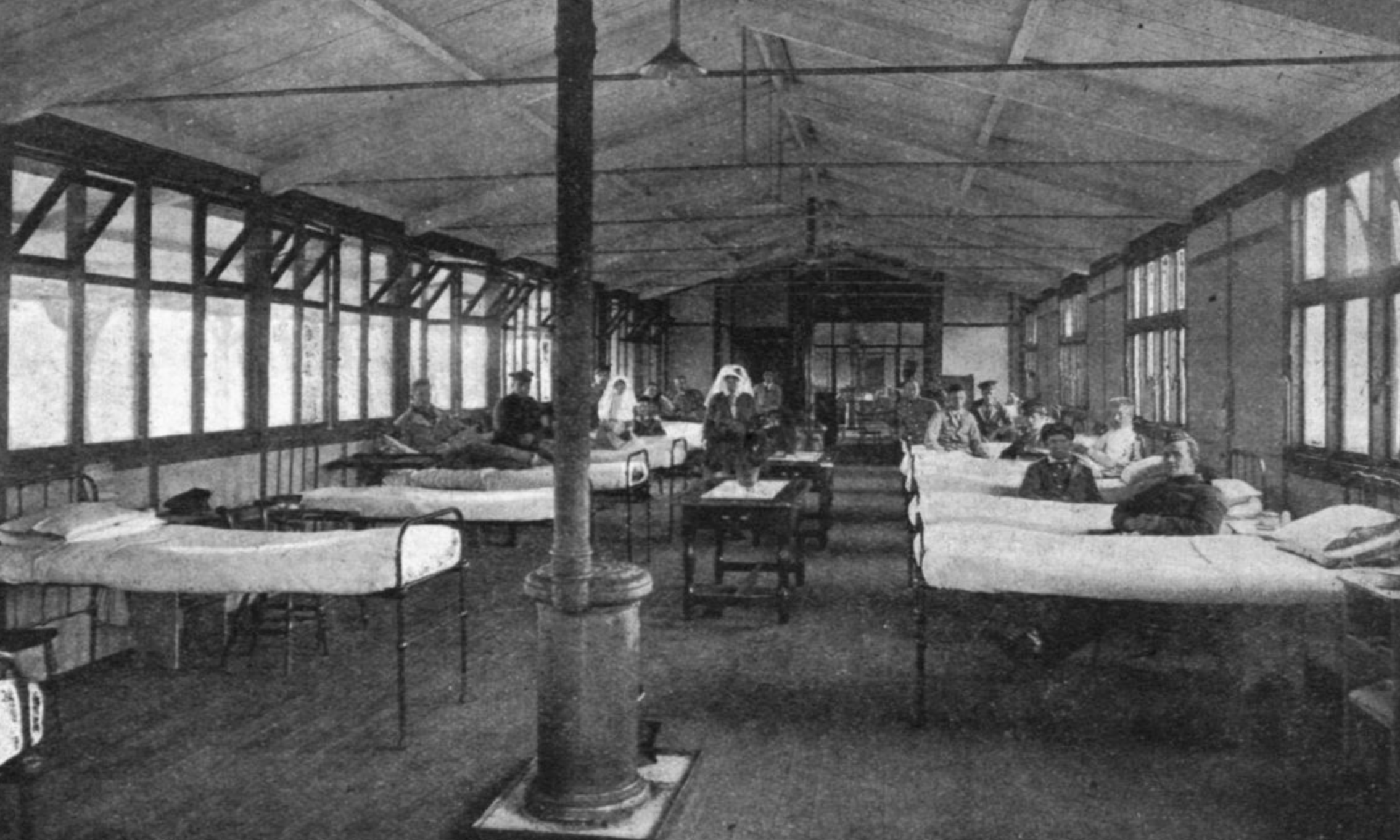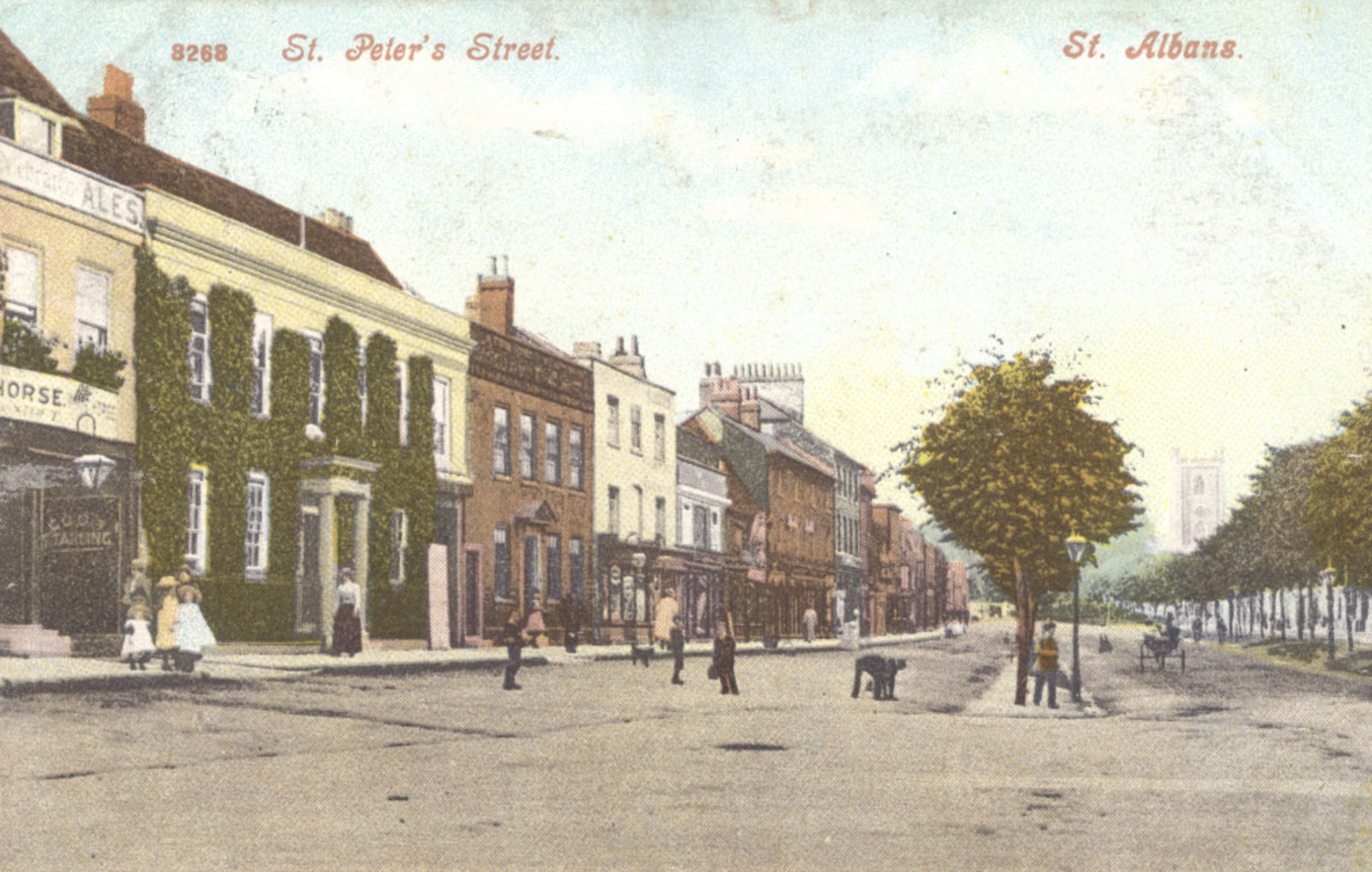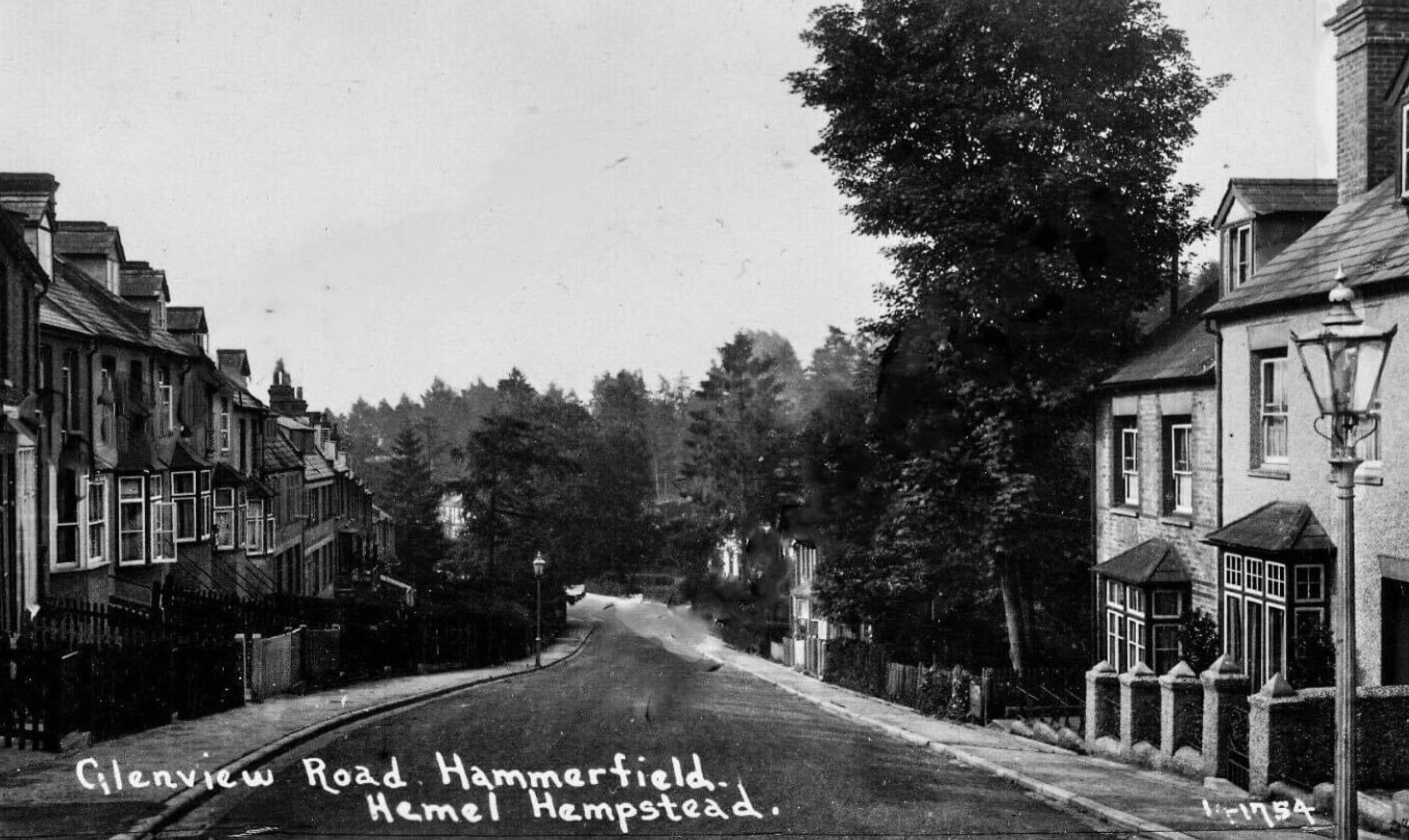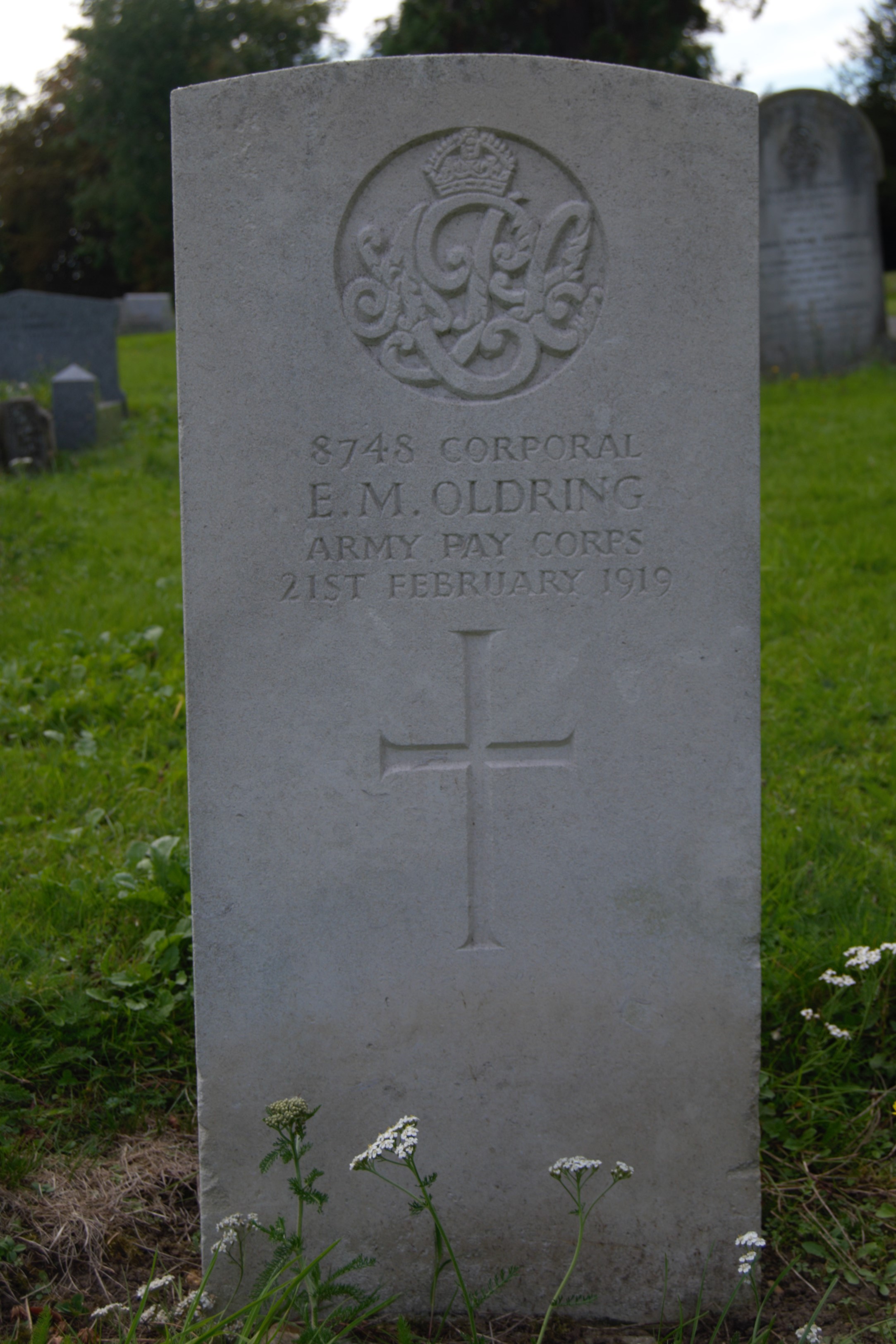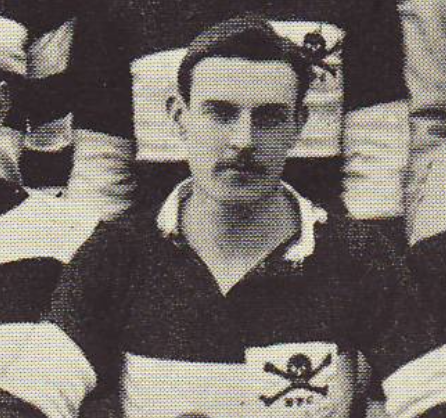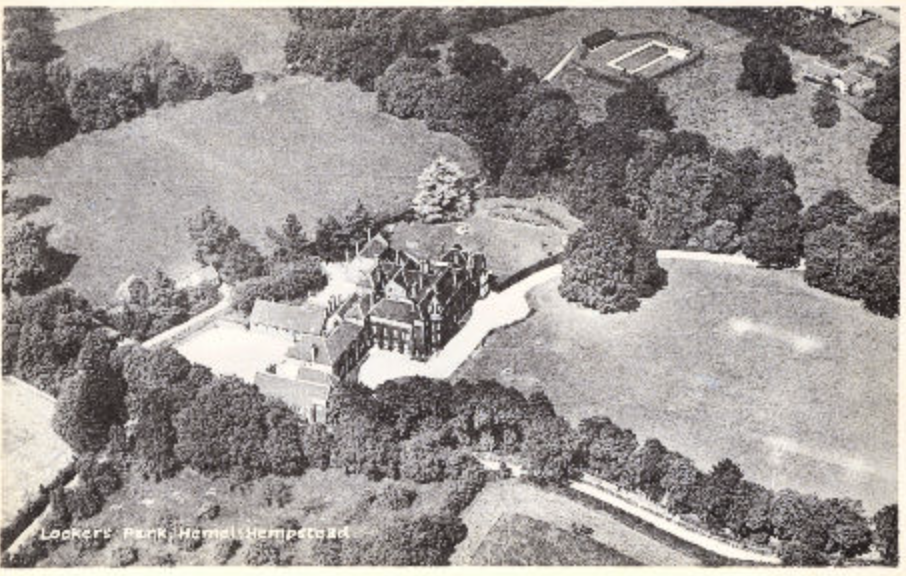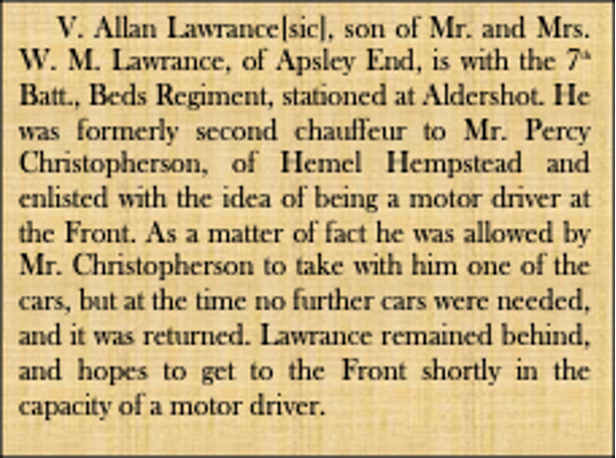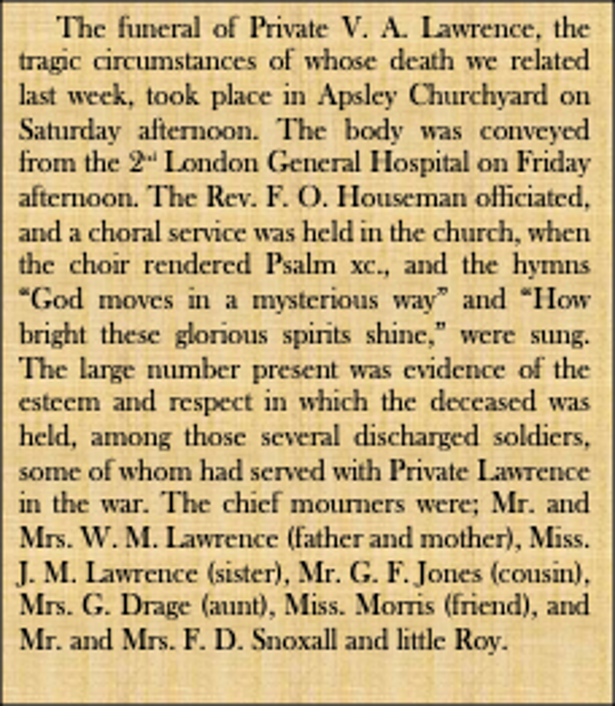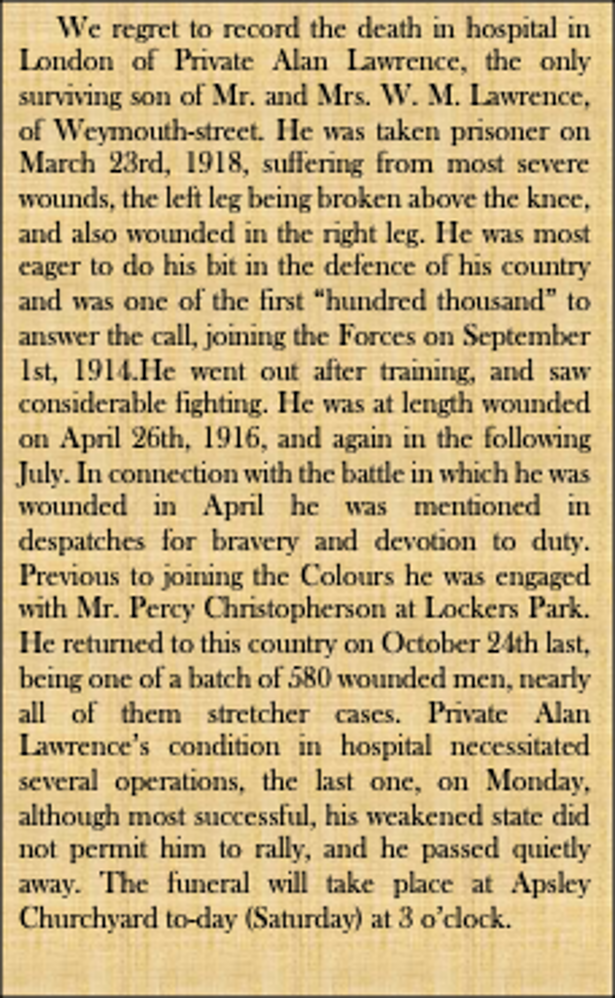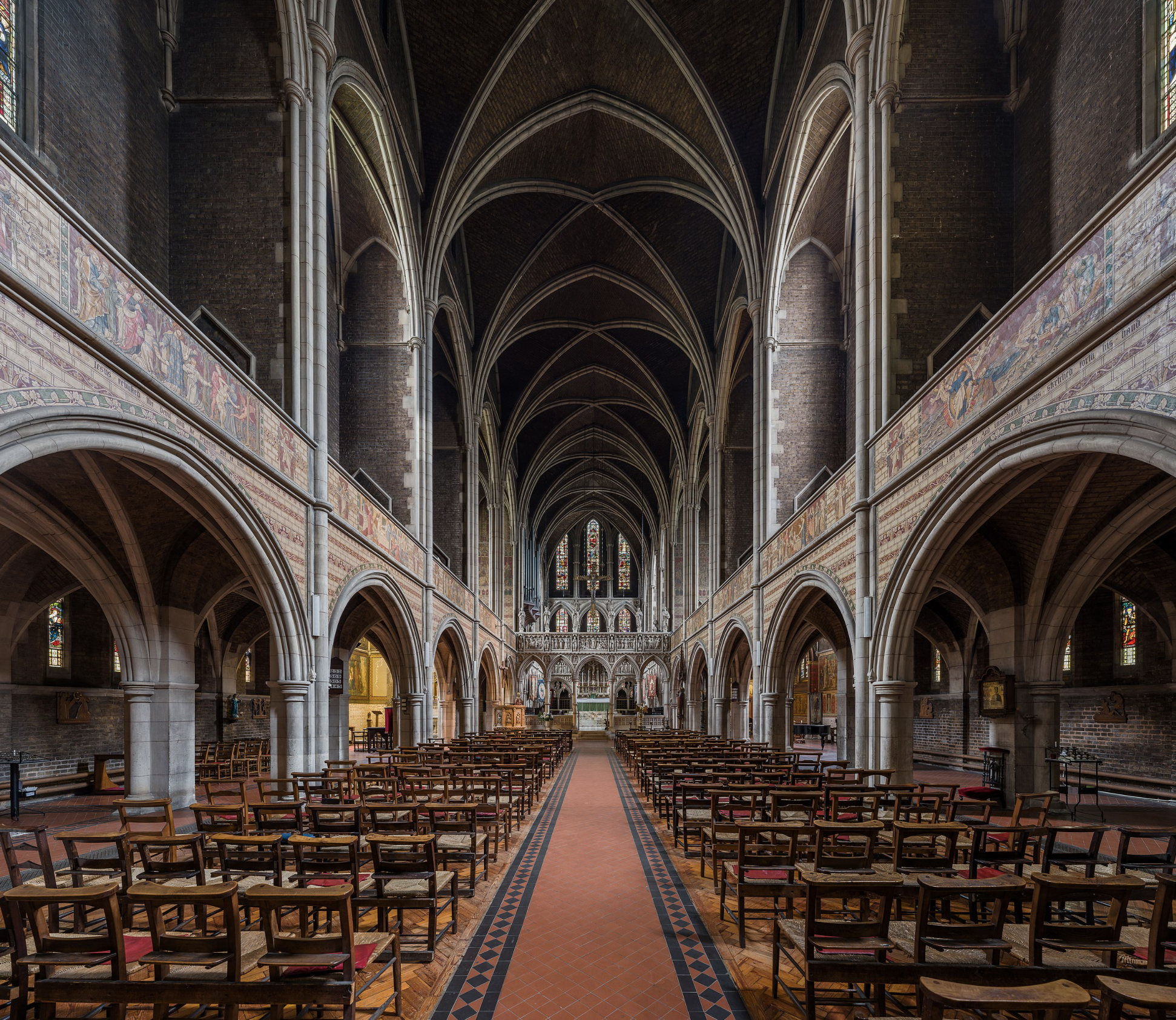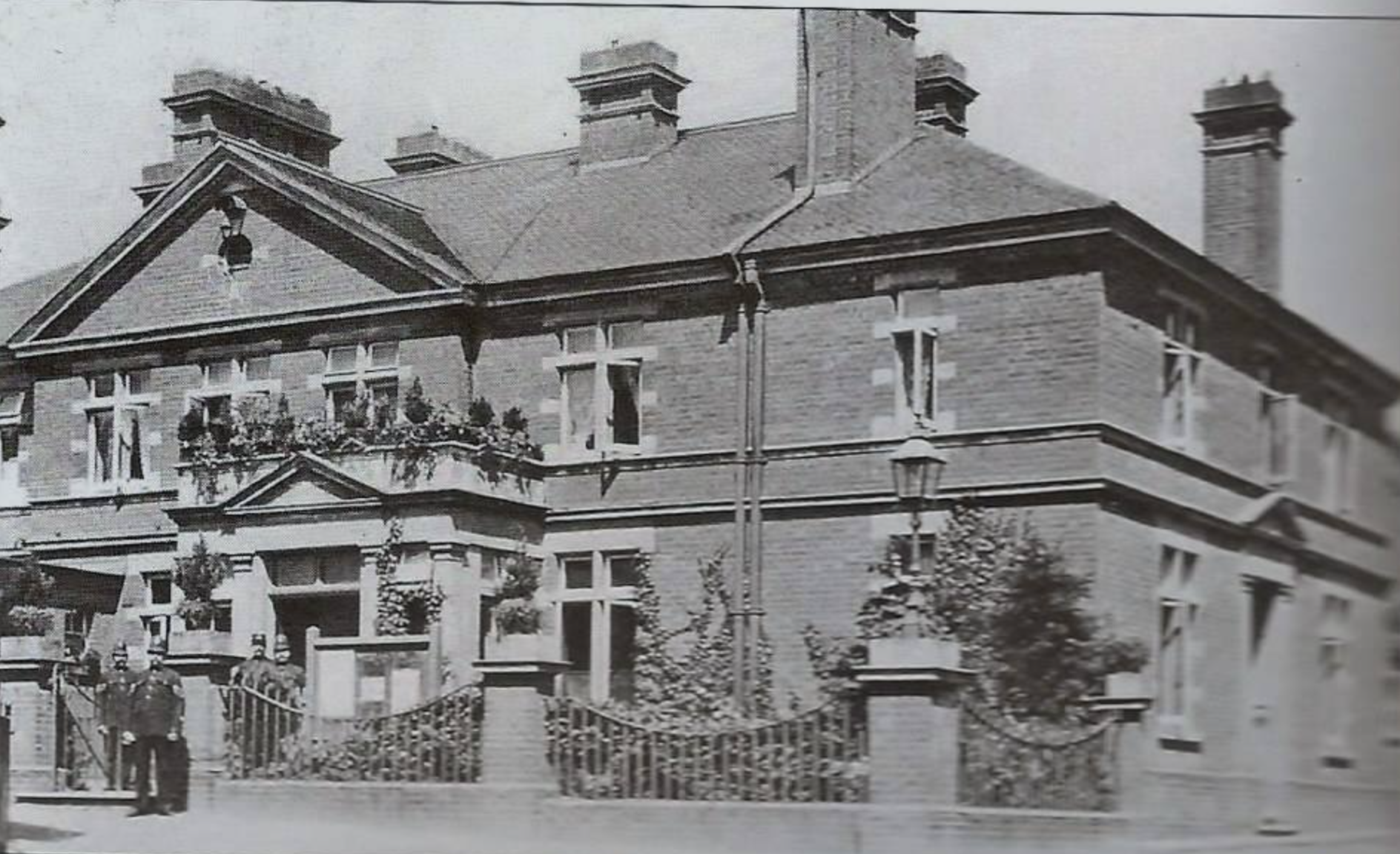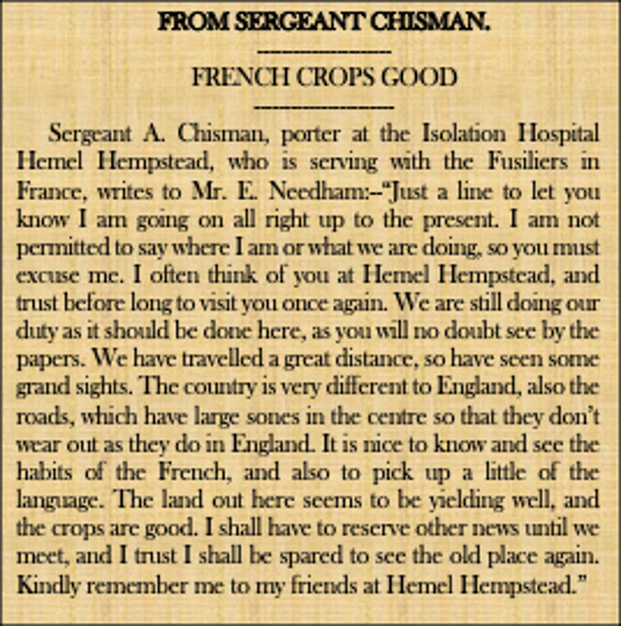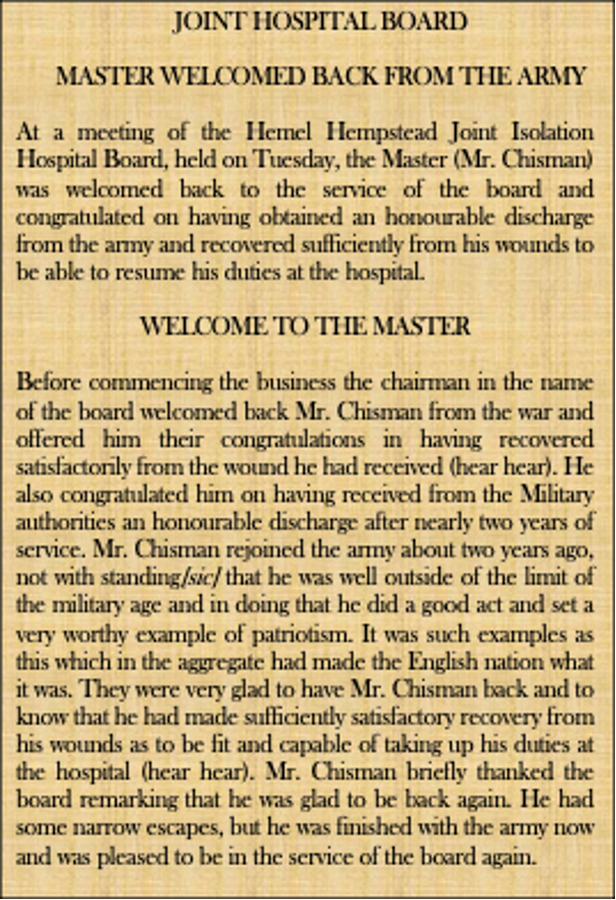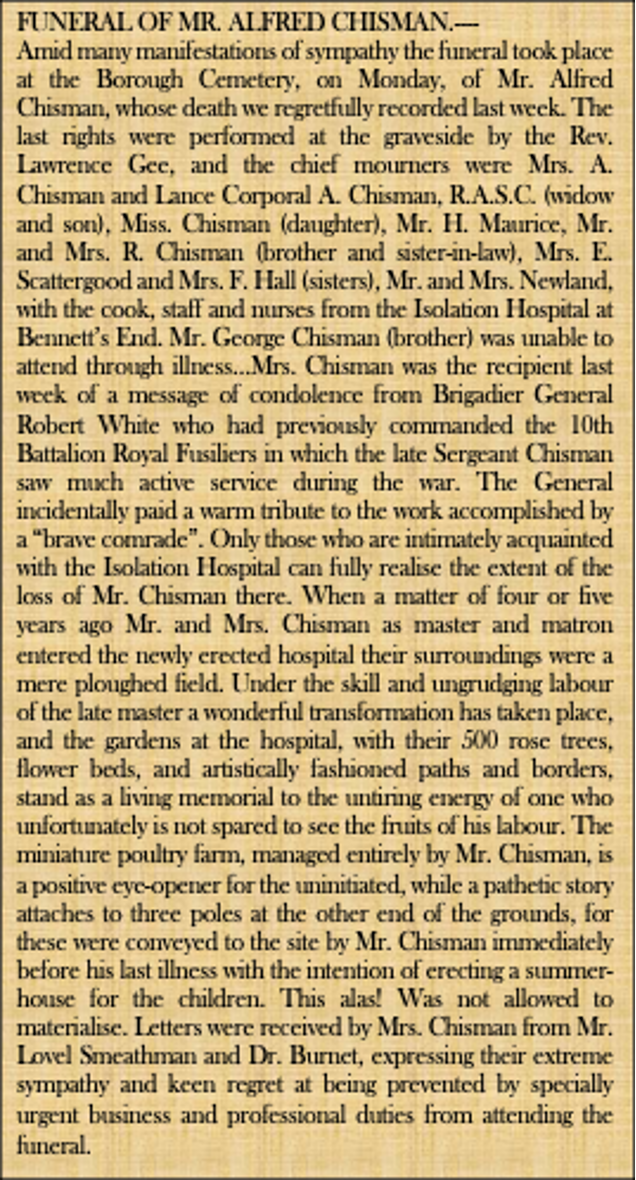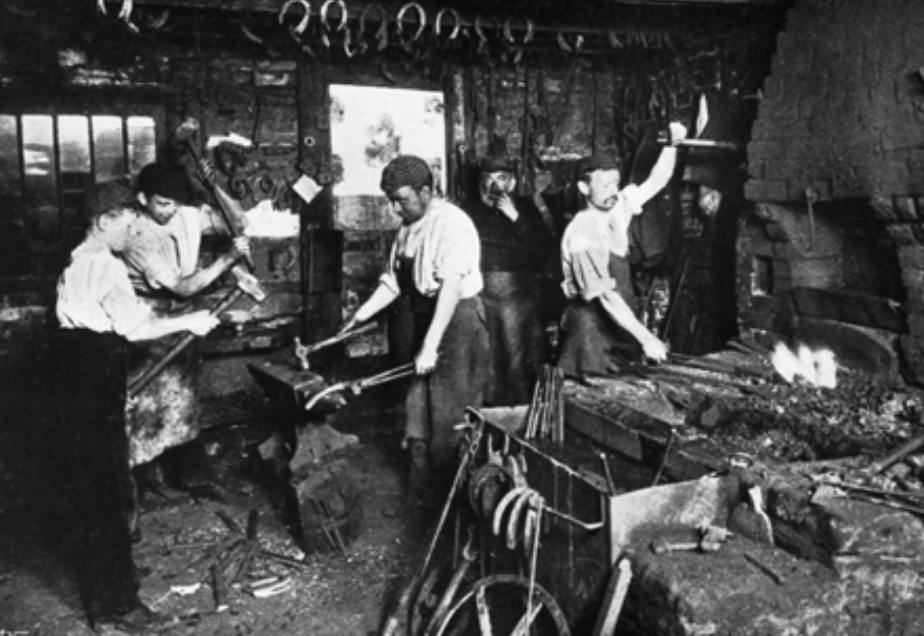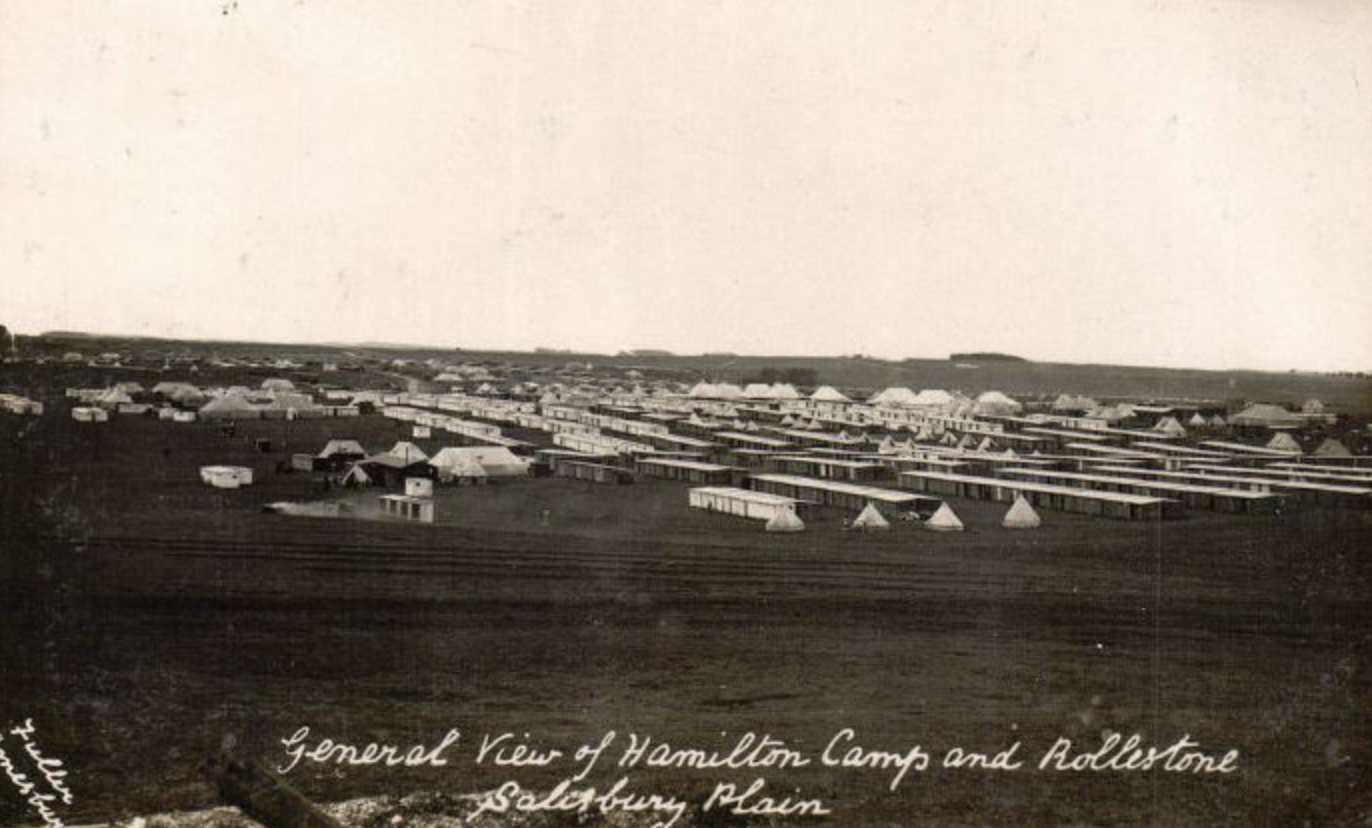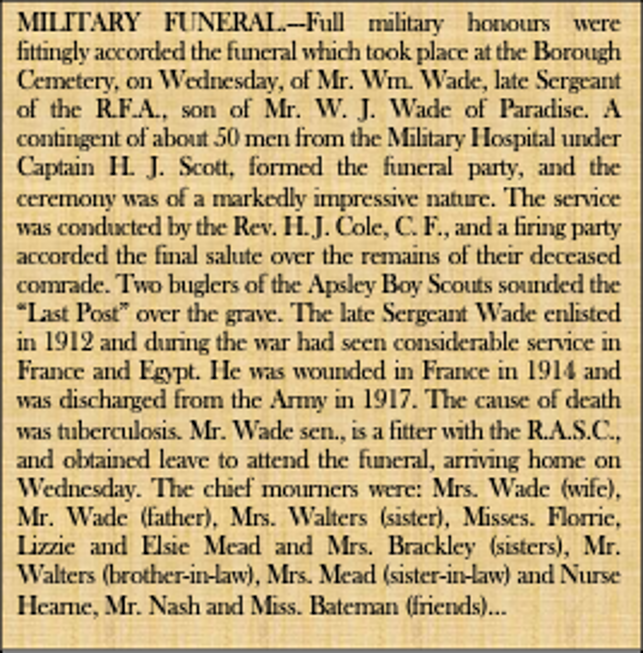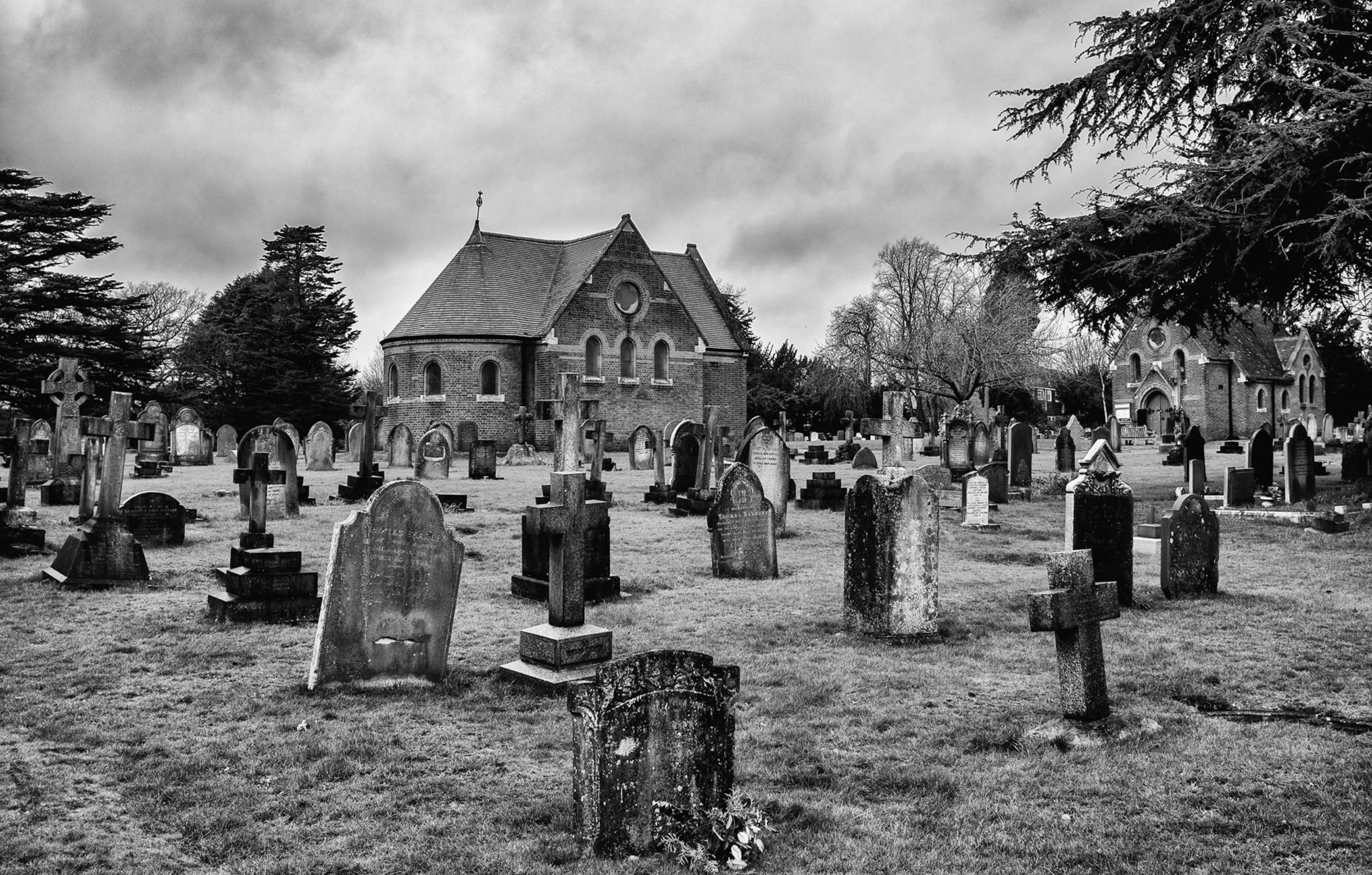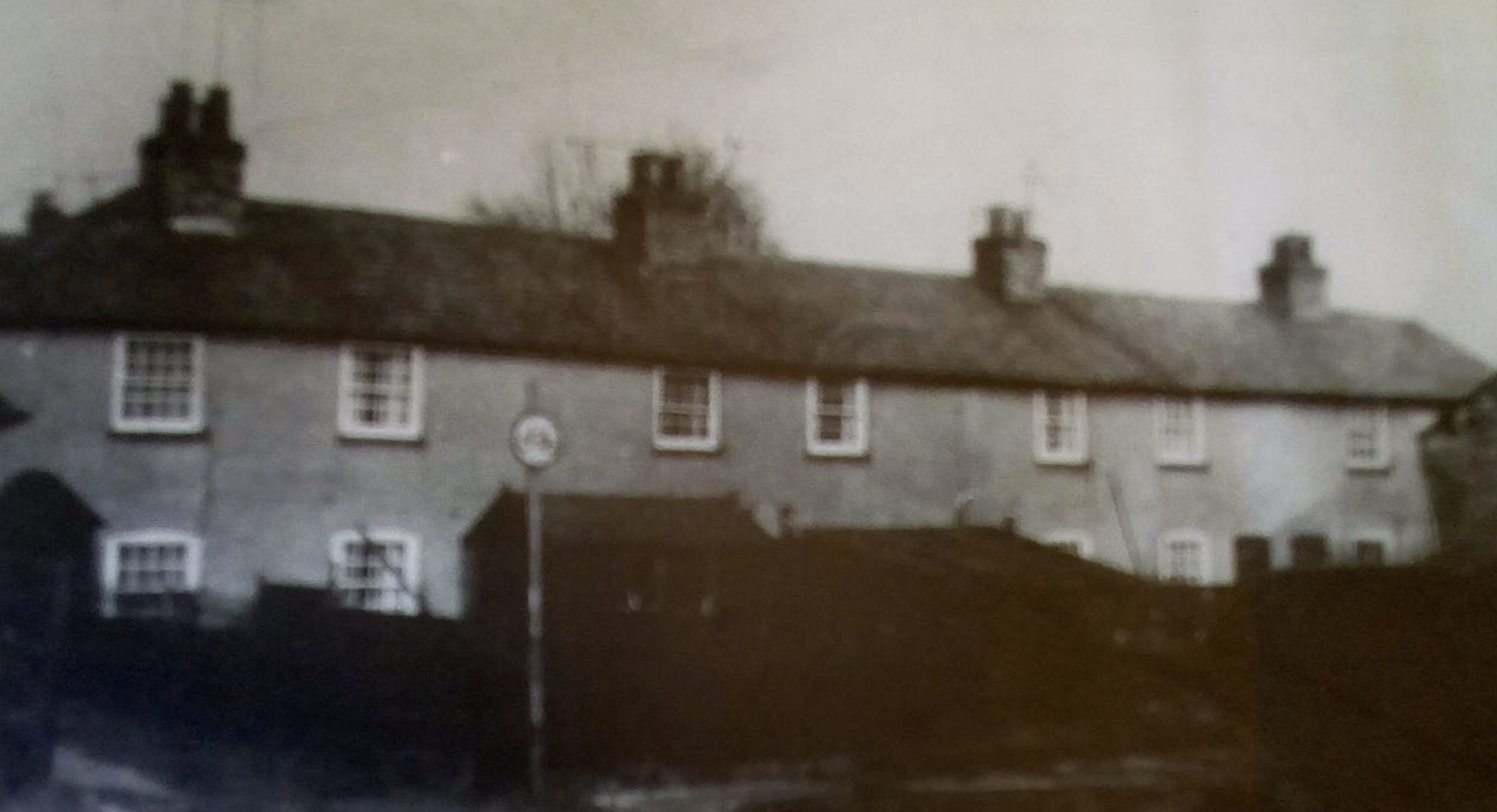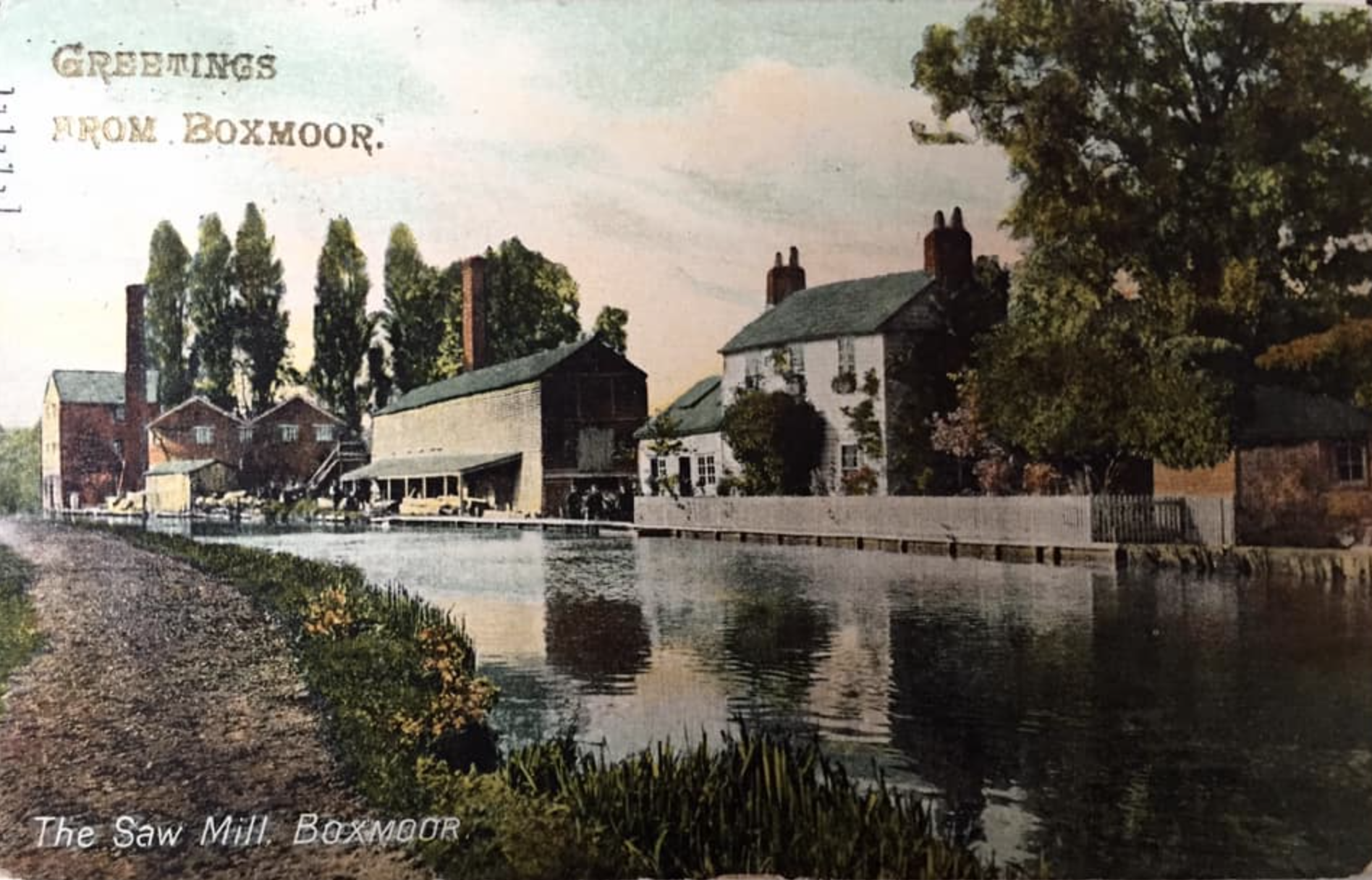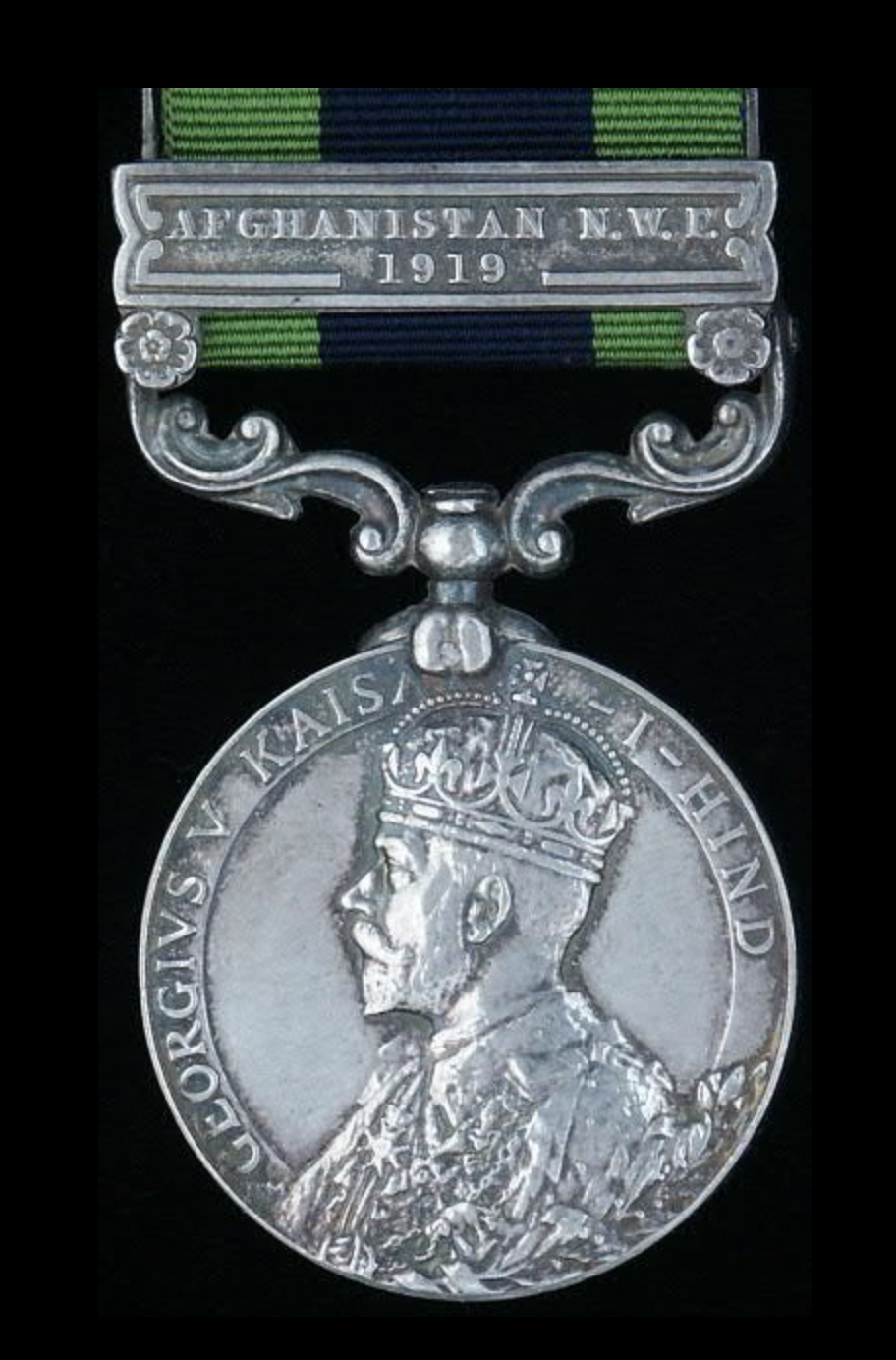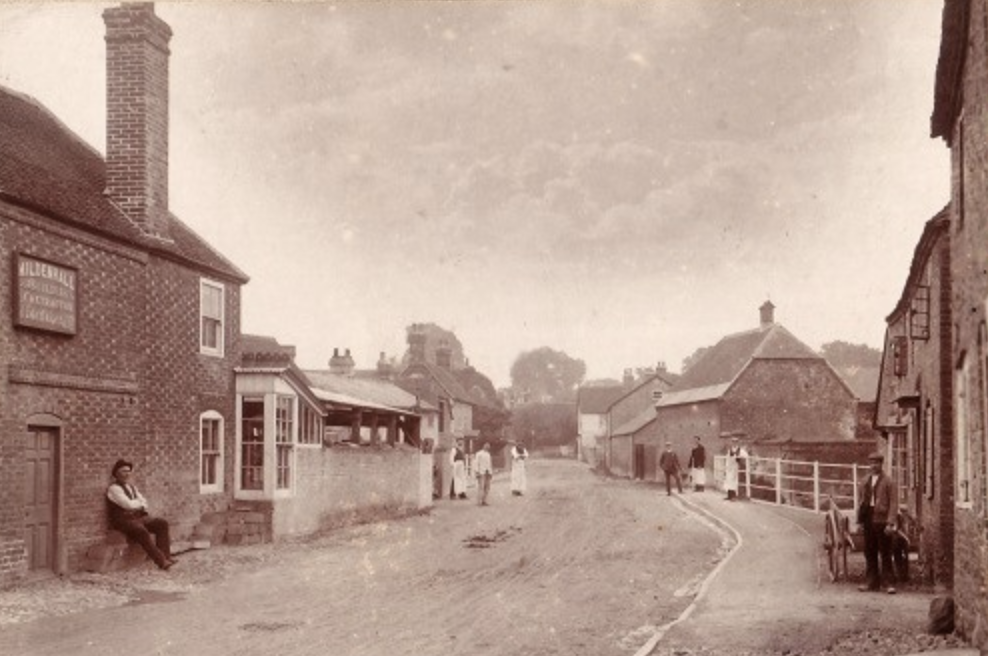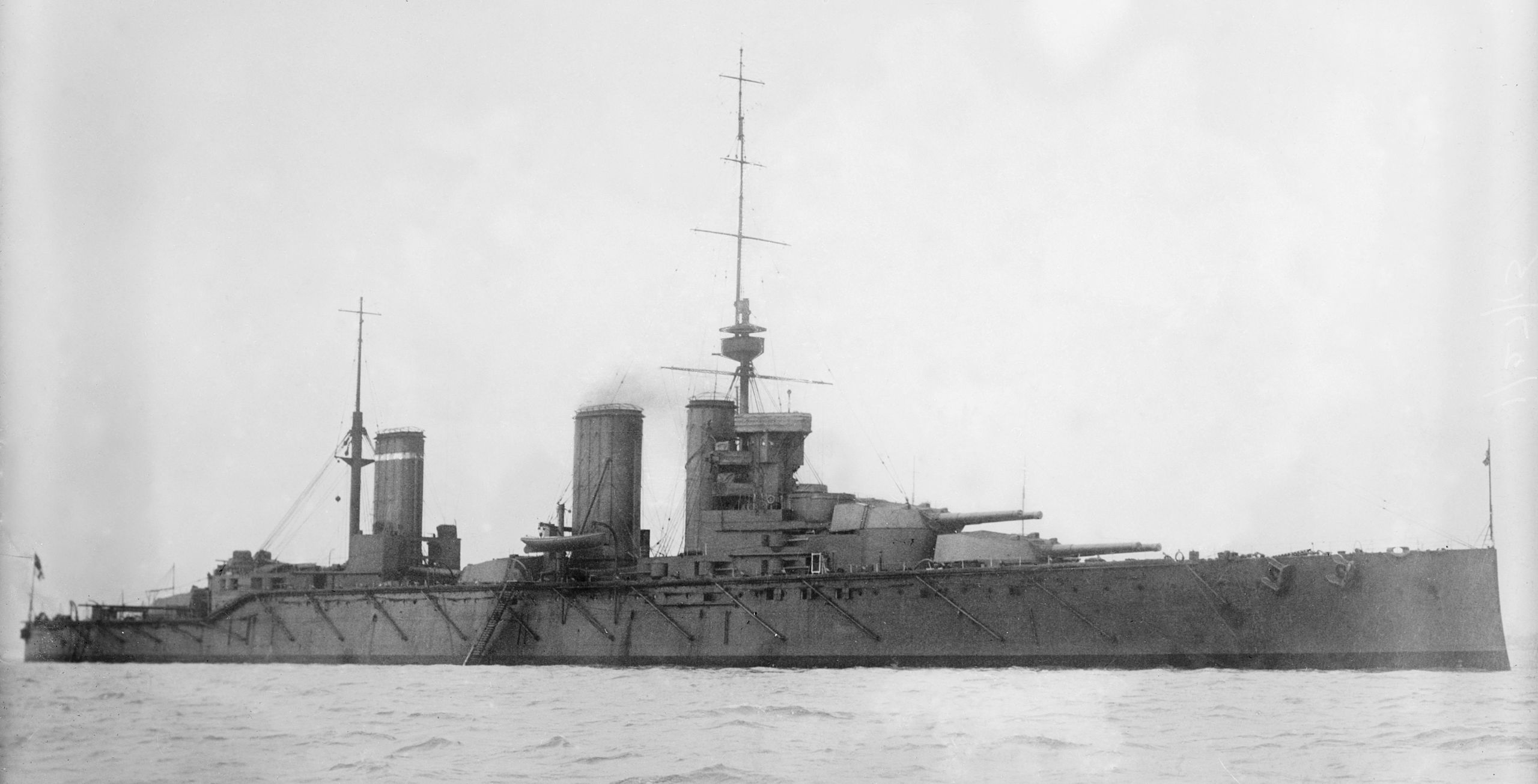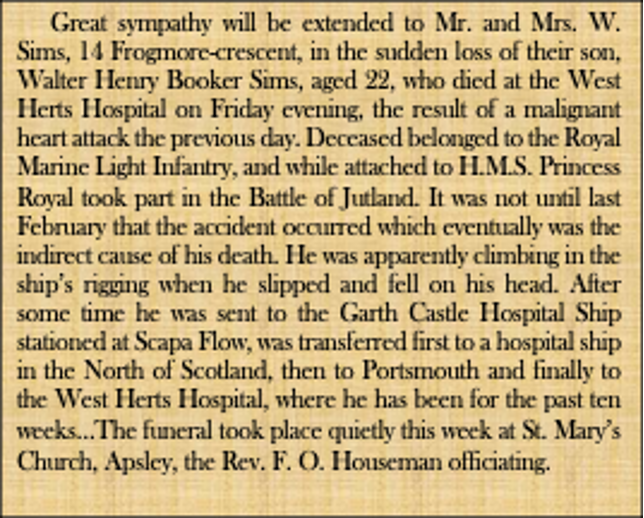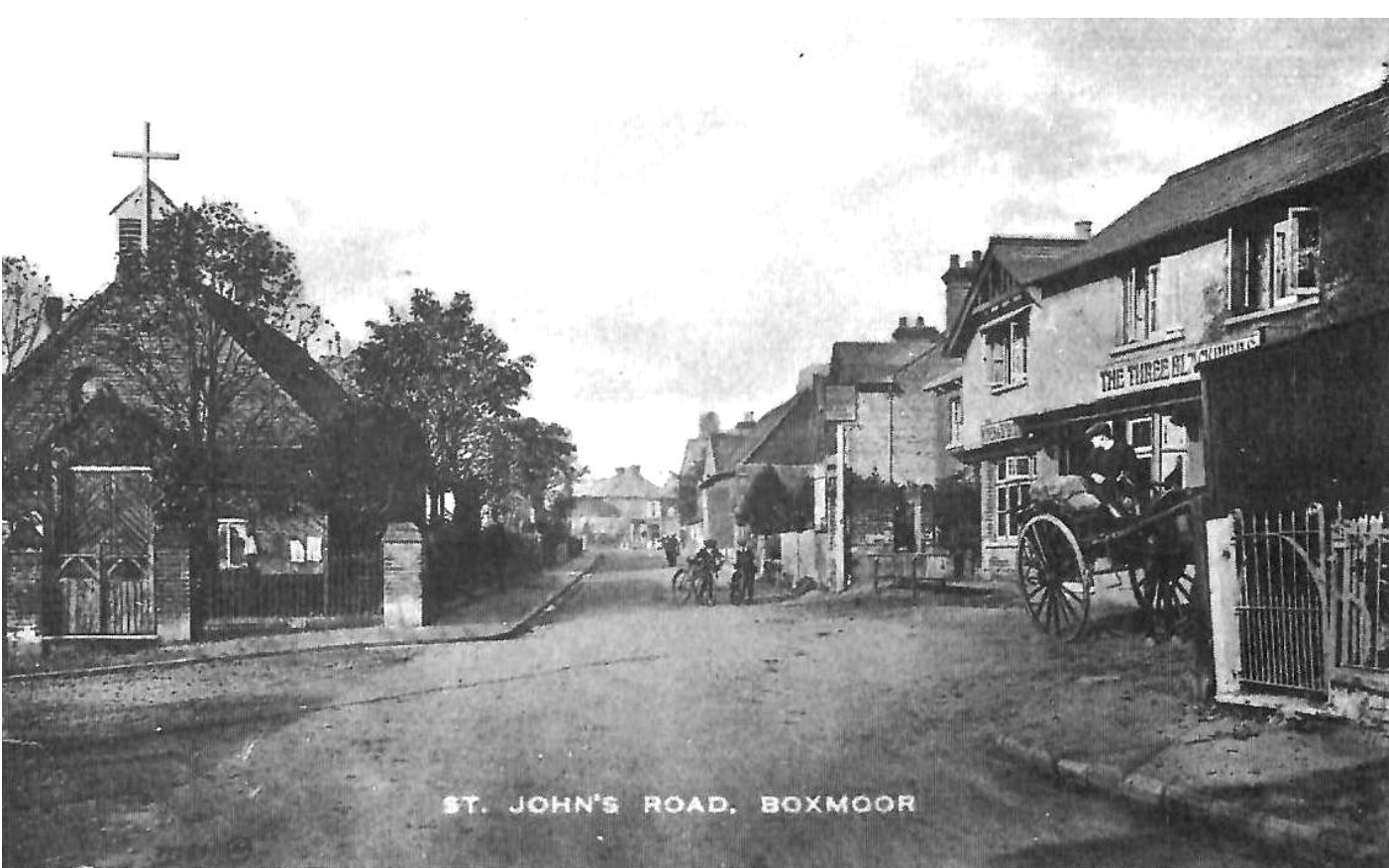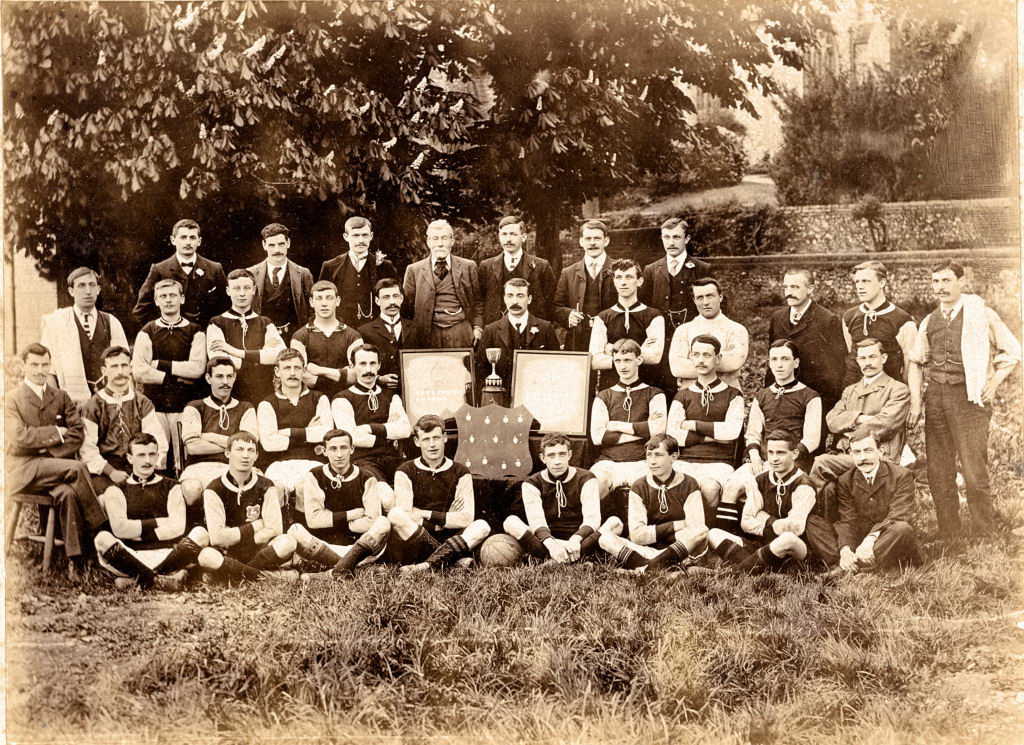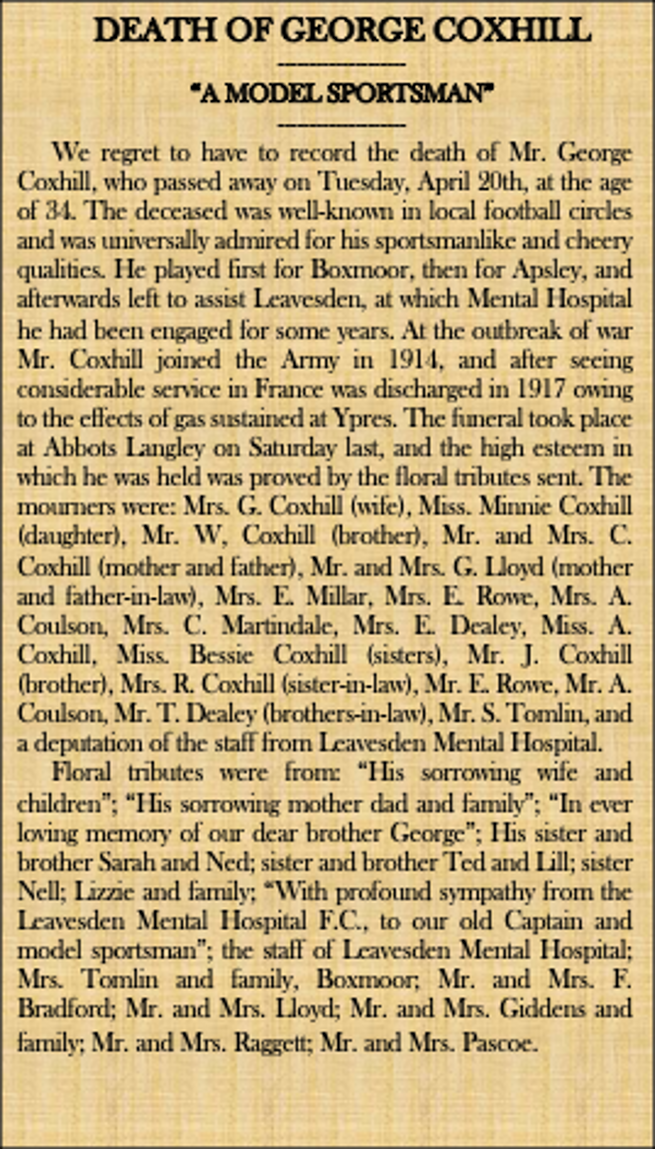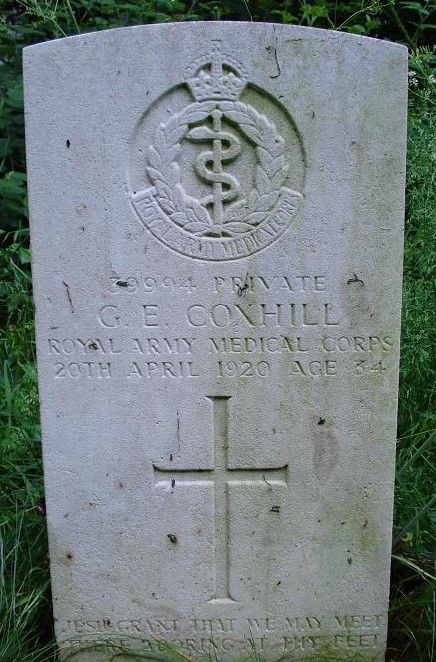Fallen 1919 -20:
William Simons
Edward Manning Oldring
Vernon Alan Lawrence
Alfred (C H) Chisman
William Wade
George Cripps
Walter Henry Sims
George Coxhill
WILLIAM SIMONS
164513 Private
75th Bn., Canadian Infantry
Died of Illness, Saturday, 25th January 1919
Remembered with Honour, Hemel Hempstead (Heath Lane) Cemetery, Hertfordshire, United Kingdom, Grave SA. 25.
William Simons was born in Eaton Bray, Bedfordshire on 16th April 1884 and baptised in the Church of St Mary the Virgin in the village in 1885. He was the second child and first son born to Thomas Simons and Phoebe Ward, who had a family of eight children together. The children were, Mary, Sarah, William, Ada, Rosa, Ruth, Agnes Lily, Sydney John, Harold and Ellen May. Mary died in 1883 aged just three.
William’s father Thomas was an Agricultural Labourer and it was this job which brought the family from Eaton Bray to Hemel Hempstead in 1897. Thomas came to work on a farm at Hoblett’s Orchard on High Street Green to the north of the town. At the time of the 1901 Census, the family were split between two houses on the farm with Thomas and Phoebe in one with Sarah, Ada and Harold, whilst William lived next door with the rest of the children and was recorded as “Head” of the household. He was working as a “Farmer’s Help”.
By 1911, the family had moved only a short distance and was recorded living at High Street Green and both William and his father are working as “Farm Labourers” possibly at the same farm although there were a number of others nearby.
William, who was twenty-six years old by this time, may already have been thinking about emigration as in August 1912 he set sail for Quebec in Canada. His stated intention was to settle in the province of Ontario and to pursue a career in farming. He arrived on the 6th September and proceeded to Toronto where he lived and worked as a “Labourer” in the Hamilton area, until war broke out two years later.
On the 25th September 1915 when he was aged thirty-one, he travelled to his local recruiting centre at Hamilton Armories to volunteer. He attested and enlisted with the recently formed 75th Battalion (Mississauga) Canadian Overseas Expeditionary Force (CEF) and was posted to the Base Camp for basic training. On enlistment he was described as “5 feet 5 inches” with a dark complexion, hazel eyes and brown hair and “fit for military service”.
The 75th Battalion was mobilised in Toronto and embarked for Great Britain on the 29th March 1916. It disembarked in France four months later on the 12th August, where it fought as part of the 11th Infantry Brigade, 4th Canadian Division.
William saw action within the month when the 75th fought with distinction in the Battles of Regina and Desire Trenches before moving to Vimy Ridge and digging in for winter.
In April He took part in the great assault at Hill 145 which proved so costly for the Canadians and it was during this engagement on the 9th that William was wounded. It is not known how serious this was or for how long he was out of the line, but he did recover and returned to his Battalion.
William survived to see the end of the Great War and had returned to England with his Battalion to await shipping out to Canada. However, in mid-January 1919, he contracted “Spanish Flu” the deadly strain of influenza ravaging the globe and he was admitted to No.12 Canadian General Hospital at Bramshott in Hampshire on the 21st of the month for treatment. Sadly however, he succumbed to his illness a few days after admission.
He died on Saturday, 25th January 1919.
Rather than being returned to Canada, his body was brought back to his parents in Hemel Hempstead where they buried him two days later on the 27th January.
William is Remembered with Honour in the Hemel Hempstead (Heath Lane) Cemetery, Hertfordshire, United Kingdom, where he is interred in Grave SA. 25. The inscription on his headstone, requested by his mother Phoebe, reads: “WE MISS YOU STILL WE CANNOT FORGET SLEEP ON, SLEEP ON”.
He was 35 years old when he died.
William is entitled to the British War Medal and Allied Victory Medal.
The Church of St. Mary the Virgin, Eaton Brae where William was baptised (Photo: http://www.churches-uk-ireland.org)
Hoblets Orchard and High Street Green home to the Simons family (Image: http://www.archiuk.com)
The Hamilton Armouries, Toronto where William volunteered for service (Photo: https://www.facebook.com)
Candians advancing at Hill 145, Vimy Ridge (Photo: https://www.worldwar1centennial.org)
No.12 General Hospital, Bramshott where William died (Photo: https://www.thesocialhistorian.com)
William’s headstone (Photo: Traquair Photography)
EDWARD MANNING OLDRING
8748 Corporal
Royal Army Pay Corps
Died of Illness, Friday, 21st February 1919
Remembered with Honour, Hemel Hempstead (Heath Lane) Cemetery, Hertfordshire, United Kingdom, Grave Q. 30.
Edward Manning Oldring known as Manning, was born in Hemel Hempstead in 1892 the seventh child of George Oldring and Ellen Lovell of 10 Glenview (Gardens) Road, Hammmerfield. He had seven older siblings who were, George, Harry, Benjamin, Ellen, Mary Ann, Winifred, Annie, and a younger brother Hubert John. Hubert was also killed in the Great War in October 1915 and his biography also appears on this site.
The Oldring family was involved in the Grocery trade and Manning’s father George had his own grocery store at 25 St Peter Street, St Albans in 1881 employing two boys. By 1891 it seems his fortunes had taken a downturn and he worked as a Grocer’s Assistant in Hemel Hempstead where he had brought his growing family. They lived at Cemmaes Terrace on the Cotterells and the two oldest boys George and Harry were working as a "Grocer’s Apprentice" and an "Errand Boy" respectively.
By the time Manning was nine in 1901, his father had left the grocery trade and instead worked as a "Bricklayer’s Labourer". The family had moved again to Glenview (Gardens) Road in Hammerfield where it remained until George’s death in 1941.
After Manning left school in 1905, he went to work for John Dickinson & Co. Limited in Apsley Mills where he progressed to become a “Clerk”. This was the job he was doing when war broke out and for some time he was not permitted to enlist by his employer. Dickinsons had released a large number of young men in the first two years of the war and the Board of Directors sought to minimise the impact of further loss of manpower, especially in skilled or more specialist jobs, as the war progressed.
However, Manning was finally allowed to volunteer, which he did in September 1917, when he enlisted with the Army Pay Corps, probably to make best use of his administrative skills developed in his employment.
Little is known of his military service, but the Army Pay Corps played an important role in ensuring that the hugely complex process of soldiers pay, separation allowances, pensions and other financial activities, was undertaken efficiently. As a result of the Corps work in the Great War it was awarded the “Royal” prefix in 1920.
Manning served until the Armistice was signed but he had not been demobilised by the time he fell ill. He contracted influenza in February 1919 whilst at home in Hemel Hempstead, the virulent strain of “Spanish Flu” sweeping the globe at the time. He was admitted to West Herts Hospital but by that time had developed Bronchopneumonia and sadly did not survive his illness.
Manning died in hospital in Hemel Hempstead on Friday, 21st February 1919 and his funeral took place six days later on the 27th at Heath Lane Cemetery in the town.
He was commemorated in three churches in the town, Marlowes Baptist Church where he was a member of the congregation, St John the Evangelist in Boxmoor and St Francis of Assisi closest to his home on Glenview Road. He was also commemorated on the John Dickinson & Co. Limited War Memorial in Apsley End, where he had worked before going to war.
A year after his death two “In Memoriam” notices were published in the Hemel Gazette, the second of which, from his heartbroken sweetheart Edith Wilkins, contained a touching verse. (see extract)
Manning is Remembered with Honour in the Hemel Hempstead (Heath Lane) Cemetery, Hertfordshire, United Kingdom, where he is interred in Grave Q. 30.
He was 35 years old when he died.
Manning is entitled to the British War Medal and Allied Victory Medal.
St. Peter's Street, St. Albans where Manning's father had his grocery store (Photo: http://www.hertfordshire-genealogy.co.uk)
Glenview Road, Hammerfield in Hemel Hempstead where Manning grew up (Photo: Public Domain)
"Spanish Flu" devastated the worl during and immediately after the Great War (Photo: https://www.postalmuseum.org)
Extract from The Hertfordshire, Hemel Hempstead Gazette and West Herts Advertiser 21st Feb. 1920
Manning Oldring's headstone in Heath Lane Cemetery (Photo: Traquair Photography)
VERNON ALAN LAWRENCE
14301 Private
"D" Coy. 7th Bn., Bedfordshire Regiment
Died of Wounds, Monday, 3rd March 1919
Remembered with Honour, Apsley End (St. Mary) Churchyard, Hertfordshire, United Kingdom, Near North Hedge
Vernon Alan Lawrence known as Alan, was born in Hertford, Hertfordshire in 1894 the third son and youngest child born to William Markwell Lawrence and Ada Williams Broome, who had a family of five children together. The children were, Nanette Jane 1888, Wilfred Cecil, Josephine Maud, Eustace Geoffrey and Vernon Alan. However, a series of tragedies beset the Lawrence family as only one of the children survived their parents. Nanette died in 1890 aged two, Wilfred in 1910 aged twenty-six, Eustace in 1912 aged twenty-four and Vernon in the Great War. The only surviving child Josephine died in 1964 in Hemel Hempstead having never married.
William brought his family to Apsley End near Hemel Hempstead sometime shortly after Vernon was born, when he gained employment with John Dickinson & Co. Limited, as a “Printer’s Compositor” at Apsley Mills. Alan followed his father into Apsley Mills when he had completed his education in 1907 and was initially apprenticed in the Engineering Department.
Both of his older brothers also worked with Dickinsons whilst his sister Josephine became a school teacher. She began as a monitress at Two Waters British School, before moving briefly to Watford Grammar School. She returned to Two Waters as a supernumerary teacher, before moving to Queen Street Council School in 1907 as an uncertificated teacher. She taught until her retirement in in the early 1930’s.
Not long after he went to work in Apsley Mills, Alan left to take up a position as a “Chauffeur” for Percy Christopherson the Headmaster of Lockers Park School. Percy Christopherson had been an England rugby international and first-class cricketer for Kent before taking up the Headmastership of the school in 1902.
His position as a chauffeur was more lucrative and came with more responsibility than Alan’s job at Apsley Mills, though his early engineering experience would certainly have qualified him for the position. The job at that time would have included the maintenance and repair of the motor cars as well as driving.
On the outbreak of war, Alan immediately made a request to his employer to be released from his position so that he could volunteer. A brief report was published in the Hemel Gazette at the time describing his enlistment and the generosity of his employer. (see extract)
Alan attested in Hemel Hempstead in the first week of September and enlisted with the Bedfordshire Regiment and was posted immediately for basic training at Aldershot. He had joined the 7th Battalion Bedfordshire Regiment “The Shiney Seventh” and for the next eleven months he learned how to be a soldier.
He was sent overseas to France on the 26th July 1915 when the 7th Battalion was posted overseas. In 1916 Alan was wounded in a raid on German trenches on the 26th April, an action reported in the ‘Times’ and recorded in the Battalion War Diaries as follows: “Last night the Bedfordshire Regiment carried out a very successful raid near CARNOY. The raiding party rushed the trenches and after fierce hand to hand fighting drove the remaining Germans into their dugouts and bombed them there. Our casualties - eight wounded, all brought in. German loss considerable."
Publication of such actions in the national press was rare and it was deemed a high honour for the 7th Battalion. On a personal level, Alan was mentioned in dispatches for “bravery and devotion to duty” and taken out of the line for treatment and recuperation.
A year later he was wounded for a second time in July 1917 but returned quickly following his recovery and continued to see significant action until on March 23rd, 1918 when he was taken prisoner at Cambrai. He had been wounded for a third time but on this occasion severely in both legs. He was taken to a German Prisoner of War camp where he was treated and remained until the following October.
He was repatriated from Germany on the 23rd October 1918 along with 538 other prisoners, most of whom were stretcher cases, and he was admitted to No.2 London General Hospital in Chelsea. During the next few months, Alan underwent several operations on his legs to treat his wounds and it was reported that these were generally successful. However, due to his weakened state following his time as a prisoner, the medical intervention took its toll and Alan sadly succumbed to his wounds.
He died in hospital on Monday, 3rd March 1919.
His body was returned to his parents in Apsley and Alan was buried in the Churchyard of St Mary’s in the village on Saturday, 8th March 1919. The well attended funeral was reported in some detail in the next edition of the Hemel Gazette which described the service and the presence of several of the men who had served with him along with his parents and relatives. Messages of condolence were received from his ex-colleagues at Apsley Mills as well as one from Mr. and Mrs. Percy Christopherson who said: “In grateful and affectionate memory of one who served loyally.” (see extracts)
He was commemorated on the War Memorial plaque in the church of St Mary’s, Apsley End where he had worshipped before going to war.
Alan is Remembered with Honour in the Apsley End (St. Mary) Churchyard, Hertfordshire, United Kingdom, where he is interred in a Grave Near the North Hedge.
He was 24 years old when he died.
Alan is entitled to the 1914-15 Star, the British War Medal and the Allied Victory Medal.
Percy Christopherson, Alan's employer, with the Barabrians rugby team in 1891 and Lockers Park School where Alan worked and Percy was Headmaster (Photos: https://www.flickr.com and http://www.hertfordshire-genealogy.co.uk)
Extract from The Hertfordshire, Hemel Hempstead Gazette and West Herts Advertiser 24th Oct. 1914
2nd London General Hospital, Chelsea where Alan died (Photo: https://www.flickr.com)
Extracts from The Hertfordshire, Hemel Hempstead Gazette and West Herts Advertiser 8th and 15th Mar. 1919
St Mary’s Church War Memorial plaque (Photo: Traquair Photography)
Pte. Alan Lawrence's headstone in St. Mary's Churchyard, Apsley End (Photo: Traquair Photography)
ALFRED CHISMAN
14301 Private
"D" Coy. 7th Bn., Bedfordshire Regiment
Died of Illness, Monday, 3rd March 1919
Remembered with Honour, Hemel Hempstead (Heath Lane) Cemetery, Hertfordshire, United Kingdom, Grave LA. 38.
Alfred Chisman was born in Highgate, Middlesex in 1868 and baptised on Friday, 12th February 1869 at All Saints Church nearby. He was the fifth child born to Thomas Chisman and Susannah Clench who had eight children together. Alfred’s siblings were, Matilda, Alice, William, Robert and his younger brother George and two younger sisters, Florence and Agnes Margaret. His brother William died when young.
When Alfred was born, his family were living on Hampstead Lane in Highgate and his father Thomas was working as a “Domestic” which appears to have been a job as a Coachman. Shortly after the 1871 Census, Thomas moved his growing family to nearby Southwood Lane and was may have been working at nearby Southwood Court a s Coachman for the John Johnston, a wealthy Assayer and Goldsmith.
Alfred left school in 1882 and followed his father into domestic service when he obtained a position as a “Groom”. He was still working in this capacity when he decided to join the Army Militia and served with the 3rd (City of London) Battalion Royal Fusiliers. It was common for young working men to enlist with the Militia Regiments as a way of supplementing their wages and in Alfred’s case, it seems he may have claimed to be a year older than he was in order to be accepted. This fact is borne out on his attestation papers when he joined the Regular Army.
On the 1st February 1886, he attested at Hounslow and enlisted with the Royal Fusiliers. On attesting he gave his age as “18 years and 9 months”, presumably to perpetuate his age claim when he enlisted with the Militia. By October 1886 he was posted to Egypt with the Regiment and spent the next year and four months there before returning to England in February 1888, by which time he had been promoted Corporal.
A year later he was promoted Sergeant and in February 1893, his initial period of service ended when he was transferred to the Army Reserve. Following the end of his military service, Alfred married his sweetheart Elizabeth Charlotte Rowe, at St Augustine’s Church in Kilburn on Saturday, 6th January 1894. A year later, their first child Hilda May was born, and she was followed two years later by a son Alfred George.
Alfred had joined the Police force after leaving the Army and as a result the children were born in Potter’s Bar and Ware in Hertfordshire where he was stationed. By 1901 he and Elizabeth were living with the children in Hoddesdon, Hertfordshire and he had attained the rank of Sergeant in the Force.
Alfred’s settled life was tragically disrupted in the summer of 1907 when his wife Charlotte died leaving him to raise the two children. By that time his job had brought the family to Hemel Hempstead where their home was the Police Station at the foot of Bury Hill. Following Charlotte’s passing, Alfred married for a second time to a widow (Harriet) Emma Edmonds (nee. Fisher), at St Paul’s Church on Monday, 21st December 1908.
By 1911, Alfred had left the Police Force and had taken up employment as a “Hospital Porter” in the Hemel Hempstead “Joint Isolation Hospital” at Bennett’s End where Emma was “Matron”.
On the outbreak of war, Alfred immediately offered his services and re-enlisted with the Royal Fusiliers on the 29th August 1914 aged forty-three. He enlisted as a Private but was immediately restored to his old rank of Sergeant and posted to the 10th Battalion Royal Fusiliers. He was sent to Colchester where, due to his service experience, was appointed as instructor responsible for training new volunteers. He continued in this role until the Battalion was transferred to the 111th Brigade in the 37th Division in April 1915 and prepared to go to France.
At this point Alfred volunteered to go to the front with his comrade and on the 31st July 1915, he disembarked and by the end of the year he had seen action at The Battle of Ancre. The month before Ancre, Alfred took a little time to write home to a friend, Edgar Needham owner of the Gazette Printworks, which reveals some of his interests and maturity. It was published in the Hemel Gazette. (see extract)
On the 1st May 1916, Alfred’s war came to an end when he received a gunshot wound to the leg. The 10th Battalion Royal Fusiliers had just taken over at the front line near the village of Berles au Bois, south of Arras. It was during this relief that Alfred received his wound and he was immediately taken down the line and evacuated to Tidworth Military Hospital near Salisbury Plain for treatment. His medical records show that he was already in poor health following the hard winter at the Front and he was suffering attacks of Rheumatism and had been afflicted with bouts of giddiness even before he enlisted in 1914.
His deteriorating health, coupled with his wounds led to the Army Medical Board categorising Alfred as “Medically unfit”, resulting in his honourable discharge on the 10th August 1916 and ascribing his Rheumatic Fever to “exposure on active service”. Alfred returned to Hemel Hempstead after his release from hospital and rejoined his wife Emma at his brand-new home at the new Joint Board (Isolation) Hospital, Bennett’s End which had opened on the 15th May 1915 and resumed his duties as Hospital Porter.
In September 1916, Alfred was issued with the Silver War Badge for service personnel who had been honourably discharged due to wounds or sickness from military service in World War I. The badge, sometimes known as the "Discharge Badge", the "Wound Badge" or "Services Rendered Badge", was first issued in September 1916, along with an official certificate of entitlement meaning that Alfred was one of the first recipients.
Alfred left his job as Hospital Porter as his health continued to be a problem and instead took up the position of “School Attendance Officer”, although he remained at the Isolation Hospital where Emma was still “Matron”. He had not been doing this job for very long when in March 1919 he contracted “Spanish Flu”, the virulent strain of influenza which had been sweeping the world for over a year. He developed pneumonia complicated by endocan sepsis which caused a painful and lingering death for poor Alfred.
He died at his home in the Isolation Hospital on Wednesday, 26th March 1919.
His funeral took place five days later at Heath Lane Cemetery in Hemel Hempstead on Monday, 31st March 1919. An extensive obituary was published in the Gazette following his interment, which included a special message of condolence form Brigadier General Robert White, late Commander of the 10th Battalion Royal Fusiliers, Alfred’s old regiment. It also described Alfred and Emma’s work in setting up the Isolation Hospital at Bennett’s End. (see extract)
Alfred’s son, Alfred Jnr., also served in the Great War with the Army Service Corps, despite having lost the sight in one eye as a child. He survived the Conflict.
Alfred was commemorated on the Leverstock Green village War Memorial. On the Hemel Hempstead War Memorial Alfred is incorrectly recorded as “C. H. CHISMAN”
Alfred is Remembered with Honour in the Hemel Hempstead (Heath Lane) Cemetery, Hertfordshire, United Kingdom, where he is interred in Grave LA. 38.
He was 50 years old when he died, and the oldest soldier recorded on the Hemel Hempstead War Memorial.
Alfred is entitled to the 1914-15 Star, the British War Medal and the Allied Victory Medal.
Sgt. Alfred Chisman (Photo: The Hertfordshire, Hemel Hempstead Gazette and West Herts Advertiser)
St. Augustine's Church, Kilburn where Alfred and Elizabeth were married in 1895 (Photo: Public Domain)
Hemel Hempstead Police Station where Alfred lived with is family when he came to the town (Photo: Public Domain)
Isolation Hospital Plan 1914 (Image: The Hertfordshire, Hemel Hempstead Gazette and West Herts Advertiser)
Extracts from The Hertfordshire, Hemel Hempstead Gazette and West Herts Advertiser 31st Oct. 1914, 11th Sep. and 9th Oct. 1915
The Silver War Badge for “Services Rendered” (Photo: http://www.europeana1914-1918.eu)
Extract from The Hertfordshire, Hemel Hempstead Gazette and West Herts Advertiser 26th Aug. 1916
Extract from The Hertfordshire, Hemel Hempstead Gazette and West Herts Advertiser 12th Apr. 1919
WILLIAM ALFRED WADE
876501 Corporal (Shoeing Smith)
355th Bde., Royal Field Artillery
Died of Illness, Saturday, 31st May 1919
Remembered with Honour, Hemel Hempstead (Heath Lane) Cemetery, Hertfordshire, United Kingdom, Grave S.16.
William Alfred Wade was born in near Ipswich, Suffolk in June 1884, the oldest of nine children born to William John Wade and Elizabeth Lovick. His siblings were, Gertrude Caroline, Ethel Mary, Annie Laurie, Millie May, Alice Hannah, John Edward, Constance Elizabeth and Ivy Violet. The children grew up between two households with William and Ethel living mainly with their Grandparents, William Wade and Caroline Brock.
The Wade men were Blacksmiths in the Bedfield area of Suffolk, about seventeen miles north of Ipswich, where William Jnr. and his younger brother John followed their father and Grandfather in the craft. William would continue to work in the trade throughout his life, although he specialised as a “Shoeing Smith”. A Shoe Smith was the skilled trade of fitting horseshoes and tending the foot health of these vitally important animals in late Victorian and early Edwardian England. In fact the skills were formally taught at Veterinary Schools and included the following disciplines; "Theoretical Principals of Shoeing", "Knowledge of the Structure and Preservation of the Horse's Foot.", Diseases of the Foot.", and the practical exam was for "Bandaging, Blistering and Minor Operations.", and "Skill as a Tradesman."
It is not known if William was formally trained and it is more likely that he developed his skills with his Grandfather and Father. In July 1902 he began his military career when he enlisted with the Rifle Brigade at Ipswich, initially for three years. William was described as “5 feet 8½ inches” with a fresh complexion, hazel eyes and brown hair.
He was sent to Gosport in Hampshire for basic training before being posted in November to the 1st Battalion. His career was short-lived however, and on the 8th June 1903, he was discharged from the service as “being medically unfit for further service”. This appears to be have been due to consumption for which William received treatment for over a year following his return home.
He picked up his trade once more until in March 1912, he joined the Army for a second time enlisting with the Territorial Force of the Royal Field Artillery (RFA), signing on for four years. He joined in his capacity as a “Shoeing Smith” and was duly assigned to the 3rd East Anglian Brigade with whom he participated in the Annual Training at Rolleston Camp on Salisbury Plain in the summer of 1912.
On the outbreak of war in August 1914, William was immediately mobilised as a serving soldier and it seems it was at this point that he came to Hemel Hempstead where some Batteries of the RFA were posted. He met a local girl, Nellie Mead and they became sweethearts.
In January 1915 William was promoted Corporal and, in the summer, before he was sent to France, he and Nellie married on Sunday, 27th July 1915. They each had a young child from previous relationships, William Walter Wade born in 1907 in Ipswich and Grace Ellen Mead born in 1911 in Hemel Hempstead. The new family all moved into Nellie’s parents’ home at 17 Paradise in the town.
In November William finally went overseas to France and whilst on duty in December, he was injured as the result of an accident which caused a flesh wound to his right hip and resulted in William walking with a “peculiar limp”, as recorded on his Army medical records.
At the end of February 1916, the 3rd Brigade sailed for Egypt disembarking on the 1st March however, William was in Egypt for only 18 days before the Brigade was ordered home. Although this coincided with the end of his four years’ service, he was retained in the regular army under the Military Services Act. On his return to England he was transferred to the 355th Brigade RFA. Shortly after his return, he was greeted with the happy news that Nellie had given birth in June to their first child together, a baby boy whom they named Leslie George.
Around this time, William’s previous health issues began to take their toll and August 1917 he was admitted to hospital in Colchester, showing signs of deterioration and increased respiratory problems. His Army Medical reports record increased frequency of coughing along with chest pain and some breathing difficulties and following examination, William was diagnosed with “Tubercule of Lungs” in fact the beginnings of Tuberculosis. Although hereditary, his mother, uncle and brother had died from the disease, it was deemed to have been aggravated by his military service.
The outcome of the medical board was his honourable discharge from the Army for a second time on the 20th December 1917, as he was again deemed “Physically Unfit”. William returned to Hemel Hempstead to see out the war and to take up his trade once more. He was issued with the Sliver War Badge for services rendered.
Sadly however, his condition worsened and over the next year he developed full blown Tuberculosis. Despite seeing the Armistice bring peace, William finally succumbed to his illness in 1919 at home in Hemel Hempstead.
He died on Saturday, 31st May 1919 and his funeral took place five days later on the 4th June at Heath Lane Cemetery in Hemel Hempstead, when the service was performed by Reverend Cole, the RFA Chaplain from Gadebridge Camp. A report of his funeral appeared in the following week's Hemel Gazette. (see extract)
William is Remembered with Honour in the Hemel Hempstead (Heath Lane) Cemetery, Hertfordshire, United Kingdom, where he is interred in Grave LA. 38.
He was 34 years old when he died only a few days before his thirty fifth birthday.
William is entitled to the 1914-15 Star, the British War Medal and the Allied Victory Medal.
Blacksmith's shop in late Victorian Suffolk (Photo: Public Domain)
Rolleston Camp on Salisbury Plain (Photo: https://www.birtwistlewiki.com.au)
RFA Guns and Horses at Handpost Farm Hemel Hempstead in 1914 (Photo: http://www.hertfordshire-genealogy.co.uk)
Colchester Genral Hospital in 1917 where William was discharged from the services (Photo: Public Domain)
Extract from The Hertfordshire, Hemel Hempstead Gazette and West Herts Advertiser 7th Jun. 1919
Heath Lane Cemetery, Hemel Hempstead where William is buried (Photo: Adrian Jones)
GEORGE CRIPPS
77787 Sapper
Signal Service Depot (Poona), Royal Engineers
Killed Accidentally, Saturday, 30th June 1919
Remembered with Honour, Delhi Memorial (India Gate), Delhi, India, Face 1.
George Cripps was born in Boxmoor, Hertfordshire on Monday, 6th November 1893 and baptised on Wednesday, 10th April 1895. He was the oldest son born to George Cripps and Catherine Sibley who had ten children together although only seven are known; Emily, Annie (both half-sisters) followed by Frederick, Jane, Thomas, Will and Lily. His brother Thomas was one of the youngest men to die in the Great War aged only sixteen when he was Killed in Action in 1916, whilst serving with the Royal Navy. His biography also appears on this site.
The Cripps family lived at 9 Fishery Cottages in Boxmoor for many years and all the children were raised there and attended the local school, Boxmoor JMI. George started his education there in the Infants Department in 1898. He left in February 1906, when he was twelve years old and went to work with G.B. Kent and Sons Limited in Apsley. By 1911 however, he had left the brush factory and found a job as a “Wooden Box Maker” at Foster’s Sawmills on Kingsland Road, a few minutes from his home.
Shortly after the outbreak of war, in January 1915, George attested at Hemel Hempstead and enlisted with the Royal Engineers (RE). He went for basic training and was initially posted as a Driver with the RE, going overseas as part of the Mediterranean Expeditionary Force in early 1916.
He worked as a Driver and Dispatch Rider and was attached to the Signals Division during his war service, all of which was spent in Afghanistan on India’s Northwest Frontier and in India itself. Little is known of his service activities other than where he served in India, namely Rawalpindi (now in Pakistan) which was an important British Military base and Poona (Pune).
Poona was were the RE Signal Service Depot was based and George saw out the war there. Following the signing of the Armistice on the 11th November 1918, the process of demobilisation began for the Allied forces. Typically, this meant that those who had volunteered earliest where prioritised, leaving later recruits and conscripted men in post longer. Additionally, postings to the far reaches of the British Empire took longer to demobilise and this was the case for George.
In June 1918, he was still at Poona awaiting his return to England when he was tragically killed in an accident. His pension records note that George died after being “Thrown from a horse” although it is not known if this was during the execution of duties.
He died on Saturday, 30th June 1919.
George is Remembered with Honour on the Delhi Memorial (India Gate), Delhi, India, Face 1 and he is buried in Hangu Cemetery in the city.
He was 24 years old when he died.
George is entitled to the British War Medal, the Allied Victory Medal, the India General Service Medal and the Afghan NWFF Medal.
Fishery Cottages just before they were demolished in 1969 where George and his family had lived. (Photo: Public Domain)
Foster's Saw Mill where George worked before going to war (Photo: Public Domain)
The Afghanistan Northwest Frontier Medal 1919 (Photo: https://www.northeastmedals.co.uk)
Delhi Memorial (India Gate), Delhi, India (Photo: CWGC)
WALTER HENRY BOOKER SIMS
18726 Private
Royal Marines Light Infantry, Royal Navy
Died of Injuries, Friday, 17th October 1919
Remembered with Honour, St Mary’s Churchyard, Apsley End, Hertfordshire, United Kingdom
Walter Henry Booker Sims, known as Harry, was born in Lambourn, Berkshire on 27th June 1897, the first child of Walter John Sims and Gertrude Emily Spencer. Walter and Gertrude had five children together who were, Harry Walter (Henry) Booker, Frederick William, Frank (Francis) Edwin, William Edmund and (Edith Gertrude) May. Frederick died in 1902 when he was only three years old and William in 1911 aged just four. His father Walter Snr. Served in the Great War as a “Staff Farrier” with the Royal Field Artillery an survived the conflict.
Harry came from a family of “Blacksmiths”, which unusually for the time, included his Aunt Annie Booker from who he took one of his names. However, when he left school in 1911 he did not go into the trade and instead found work as an “Errand Boy”.
On the 5th January 1913 aged fifteen, he left this work to join the Royal Navy and was accepted as a “Boy 2nd Class” and sent to HMS Ganges II, the onshore establishment at Shotley in Suffolk to begin his training. He signed on for the standard twelve years to begin on his eighteenth birthday and was described as 4 feet 11⅖ inches in height, with brown hair, grey eyes and a fair complexion.
Despite his small stature, Harry progressed quickly and with a few months was posted to HMS Hawke, then HMS Endymion before returning to the Hawke in November 1913. Less than a month later however, his naval career stalled when he was invalided from the service on 5th December owing to “Acute Rheumatism”. This appears to have been Rheumatic Fever from which Harry recovered.
Following the outbreak of war, Harry re-enlisted in the Navy, this time with the Royal Marines Light Infantry and proceeded to serve for much of the war. He was at the Battle of Jutland in 1916, the world’s last major battle primarily between warships, aboard HMS Princess Royal. Despite his ship being hit nine times during the Battle Harry survived when twenty-two of his crew mates did not.
The rest of Harry’s war was spent on routine naval patrols around the British coastline which included support duties at the Battle of Heligoland-Bight in 1917.
In February 1919, Harry was severely injured when he suffered a fall from the mast rigging and landed on his head on the ship’s deck. He was taken after some time to a hospital ship, HMS Garth Castle at Scapa Flow in the Orkney Islands for treatment. From there he was transferred to another ship in the vicinity and brought to Portsmouth.
At this point, Harry was invalided from the service for a second time owing to the seriousness of his injuries and on the 31st May 1919 he was awarded the Silver War Badge for Services Rendered. He was finally transferred to West Herts Hospital in Hemel Hempstead where his family now lived and where his father had served with the RFA.
He arrived at West Herts in the second week of August and continued to be treated for his injuries. Sadly however, he did not recover and in mid-October he suffered a fatal heart attack which was indirectly attributable to his fall earlier in the year although his bout of Rheumatic Fever may also have been a contributory factor.
Harry died in hospital on Friday, 17th October 1919. He was buried in a quite service at St Mary’s Church in Apsley a few days after he had died.
Harry is Remembered with Honour in St Mary’s Churchyard, Apsley End, Hertfordshire, United Kingdom
He was 22 years old when he died.
Harry is entitled to the British War Medal and the Allied Victory Medal.
Oxford Street, Lambourn c1903 where Harry was born and grew up (Photo: https://lambourn.org)
Pte. Harry Sims, R.M.L.I. (Photo: N. Ciriello)
HMS Princess Royal (Photo: https://en.wikipedia.org)
Extract from the Hertfordshire, Hemel Hempstead Gazette and West Herts Advertiser 25th Oct. 1919
GEORGE EDWARD COXHILL
39994 Private
Royal Army Medical Corps
Died of Wounds, Sunday, 20th April 1920
Remembered with Honour, Abbots Langley (St. Lawrence) Churchyard, Hertfordshire, United Kingdom, 451. (N.E. Plot).
George Edward Coxhill was born in Northchurch, Hertfordshire on Wednesday, 14th April 1886 the third son and sixth child born to Charles Coxhill and Ruth Impey, who had sixteen children in total over a period of twenty-nine years. This impressive brood were Mary Ellen, John William Edward, Sarah Jane, Robert William, Emma Jane, George Edward, Elizabeth Ethel, Minnie (Mary) Elizabeth, Jess, James, Lilly, twins Annie and Jennie, Willie (Charles William) and Dorothy Bessie. Jess and Emma Jane died in 1894 aged two and one respectively, Jennie in 1898 days after birth, and John in 1911 aged thirty-five and one other unknown child died in infancy.
One of George’s older brothers Bob fought in the Great War with the Royal Army Medical Corps (RAMC) and died as a result of his wounds in 1917. His biography appears on this site. A younger brother James also served with the RAMC and survived the conflict.
When George was six in 1891, his family lived at “Canal Side” in Berkhamsted and his father Charles worked on the railways but later the same year the Coxhills came to Boxmoor near Hemel Hempstead and set up home at 52 St. John’s Road.
George entered the local school, Boxmoor JMI when he successfully negotiated five of the seven school “Standards” before leaving on the 25th February 1898 to start work as an “Errand Boy”. By the time of the next census in 1901, he had found employment as a “Groom” and as a fifteen-year-old had begun to display his sporting talents.
He was already a regular player with his local football team, Boxmoor and shortly afterwards started playing for a successful Apsley F.C. with whom he remained until he went to work in Leavesden Asylum as an “Attendant” and immediately joined the football team there. He was by this time a well-known footballer in local circles and as his obituary would later note, “was universally admired for his sportsmanlike and cheery qualities”.
Shortly after starting work at Leavesden, he met Lilian Lucy Lloyd a nurse who had come to work in the hospital in 1907 and the two soon became sweethearts. They were married in the summer of 1910 in Hemel Hempstead and a year later their first child was born, a daughter whom they named Minnie Madeline and their only son John Edward appeared in 1919.
They had moved into 19 Asylum Cottages in the grounds of Leavesden Hospital as soon as they were married which George’s older brother Bob, who also worked at the Hospital, had occupied with his wife immediately before the newlyweds moved in.
On the outbreak of war, George volunteered almost immediately when he attested at Watford in September 1914 and enlisted with the Royal Army Medical Corps (RAMC). By the time he joined up he had qualified as a “Nurse” and he was posted to 77th Field Ambulance to undergo basic training near Salisbury Plain. The following year on the 27th September George went to France with his unit.
Over the next year he saw action at Vimy Ridge and the Somme, but in April 1917 he began to suffer from a persistent cough and general weakness which was initially thought to be Bronchitis. However, his symptoms developed and worsened until he was admitted to hospital in France on the 11th December and shortly afterwards on the 20th, evacuated to England and taken to Bermondsey Military Hospital.
George was diagnosed with Tuberculosis as a result of exposure and infection which was deemed to be directly attributable to his war service. Although he made progress and improved somewhat, his health did not recover enough to return to duty, and he was honourably discharged from the Army on the 25th March 1918 and categorised “Physically unfit for war service”.
He returned to his wife and daughter at Leavesden, but his respiratory problems continued for the next two years until he finally passed away. The cause of his death was recorded as “Pulmonary Tuberculosis and Heart Failure” brought on by his war service.
George was buried in the churchyard of St Lawrence parish church in Abbotts Langley and a brief report of his funeral was published in the Hemel Gazette shortly afterwards.
He died of his wounds on Sunday, 20th April 1920.
George is Remembered with Honour in Abbots Langley (St. Lawrence) Churchyard, Hertfordshire, United Kingdom, where he is interred in Grave 451. (N.E. Plot).. The inscription on his headstone, requested by his wife Lilian, reads: “JESU GRANT THAT WE MAY MEET THERE ADORING AT THY FEET”.
He was 34 years old when he died.
George is entitled to the 1914-15 Star, the British War Medal and the Allied Victory Medal.
George Coxhill c1905 (Courtesy: http://www.hertfordshire-genealogy.co.uk)
St. John's Road, Boxmoor c1900 (Photo: http://boxmoorgoodneighbours.org.uk)
Apsley F.C. 1904-05, George fourth from left, third row (Photo: http://www.hertfordshire-genealogy.co.uk)
Left: Leavesden Mental Asylum where George worked (Photo: ©Peter Higginbottom; http://www.workhouses.org.uk)
Right: Bermondsey Military Hospital where George's war ended (Photo: http://www.25throyalfusiliers.co.uk)
Extract from the Hertfordshire, Hemel Hempstead Gazette and West Herts Advertiser 1st May 1920
Pte. George Coxhill’s Headstone Abbots Langley (St. Lawrence) Churchyard, Hertfordshire, United Kingdom (Photo: Traquair Photography)
